The













Iran enters its fourth week of nationwide protests with anti-regime chants still echoing in every city and village in Iran and more people joining the protests in defiance of a ruthless crackdown by Iran’s security apparatus.
In the cover story, Suzan Quitaz speaks about how the Iranian regime is targeting the Kurds. In her story, she said that the protests that are taking place are different from the ones that were seen in 2009 or 2019.
She added that the current uprising is broad-based and inclusive, crossing through ethnic and class lines. Iran as a whole is revolting: the rich urban residents have come out alongside the poor. The youth are there, and so are their parents, alongside Iran’s non-Persian national communities – the Kurds, Baluchis, Azeris, Turkmen and Iran’s Arab community.
Dalia Ziada also writes about how Iranian women are removing their hijabs to get back their rights. She said that to Iran’s youth, and especially to its young women, the unjustifiable assault and murder of Amini has been a mirror reflecting back an image of the miserable reality of life under a religious regime that systematically violates basic human rights. It has struck both a chord and a match.
“Unlike all other protests seen on Iranian streets of late, this one has not been motivated by political or economic concerns, but by the desire of the country’s youth to live a normal life free from fear of political repression or divine punishment,” Ziada said.
In the report section, Motasem Al Felou speaks about the “new downtown” which will be the new concept the Saudi Downtown Company (SDC) is bringing to the 12 cities in the Kingdom.
The concept of “new downtown” almost does not exist in the modern Saudi Arabia. The concept of “city center” or “downtown” refers to the busiest business district in any city.
According to the launch press release, SDC aims to build and develop downtown areas and mixed-use destinations in 12 cities throughout Saudi Arabia. The 12 cities include: Al-Madinah (northwest), Al-Khobar(east), Al-Ahsa (east), Buraidah (northcentral), Najran (southwest), Jazan (southeast), Hail(northwest), Al-Baha (western), Arar (north), Taif (west), Dumat Al-Jandal (northwest), and Tabuk (northwest).
In the sports section, Sara Gamal writes about the venues where the World Cup matches will be held in Qatar.
Read these articles and more on our website eng.majalla.com. As always, we welcome and value our readers’ feedback and we invite you to take the opportunity to leave your comments on our website.


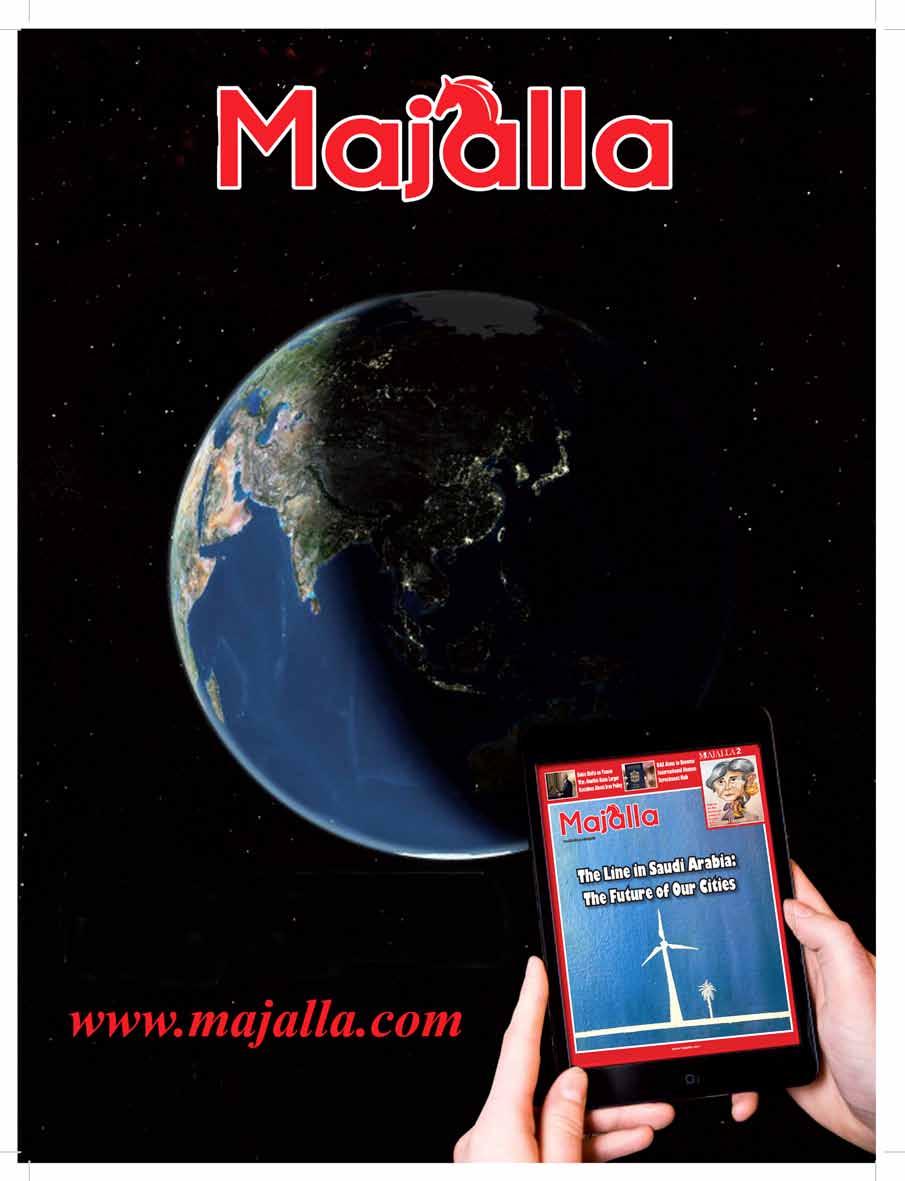
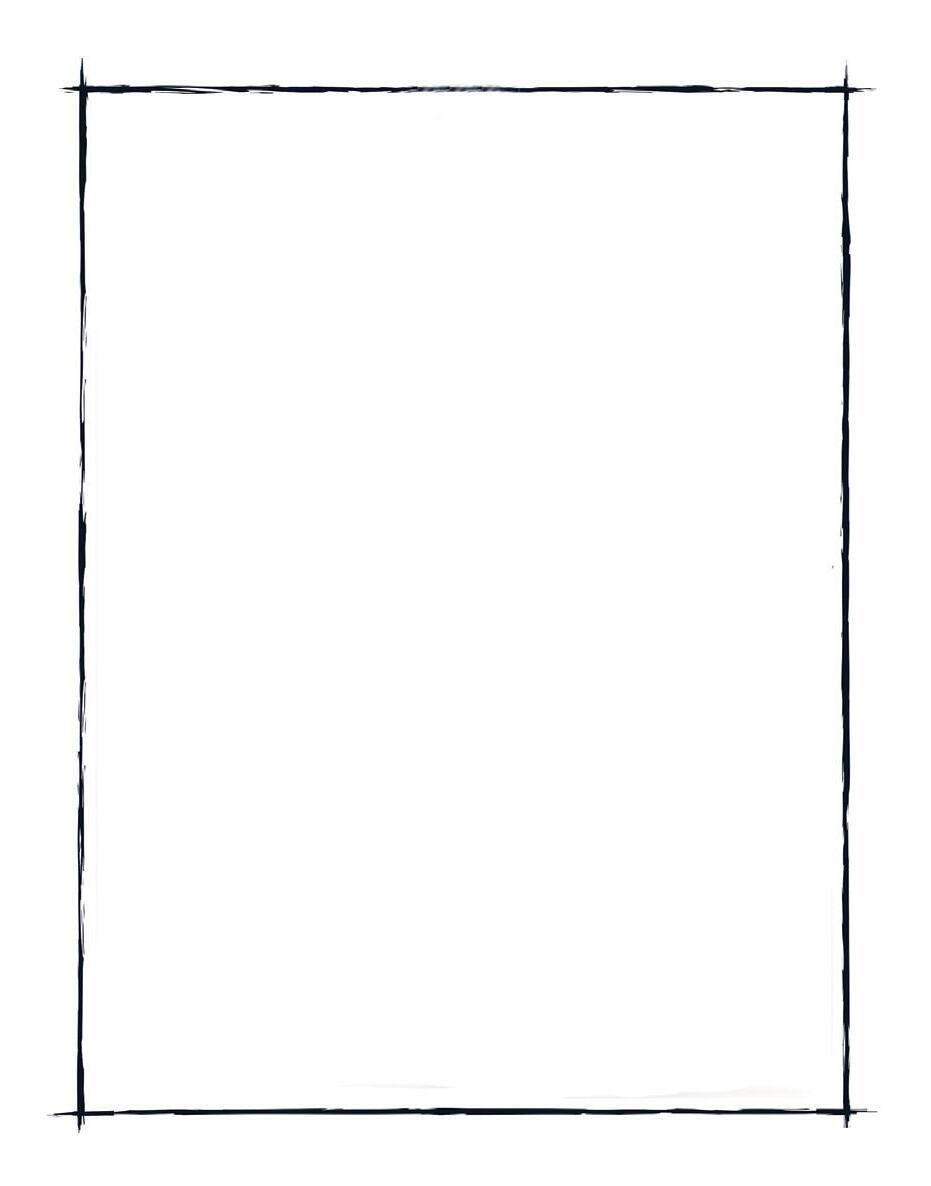
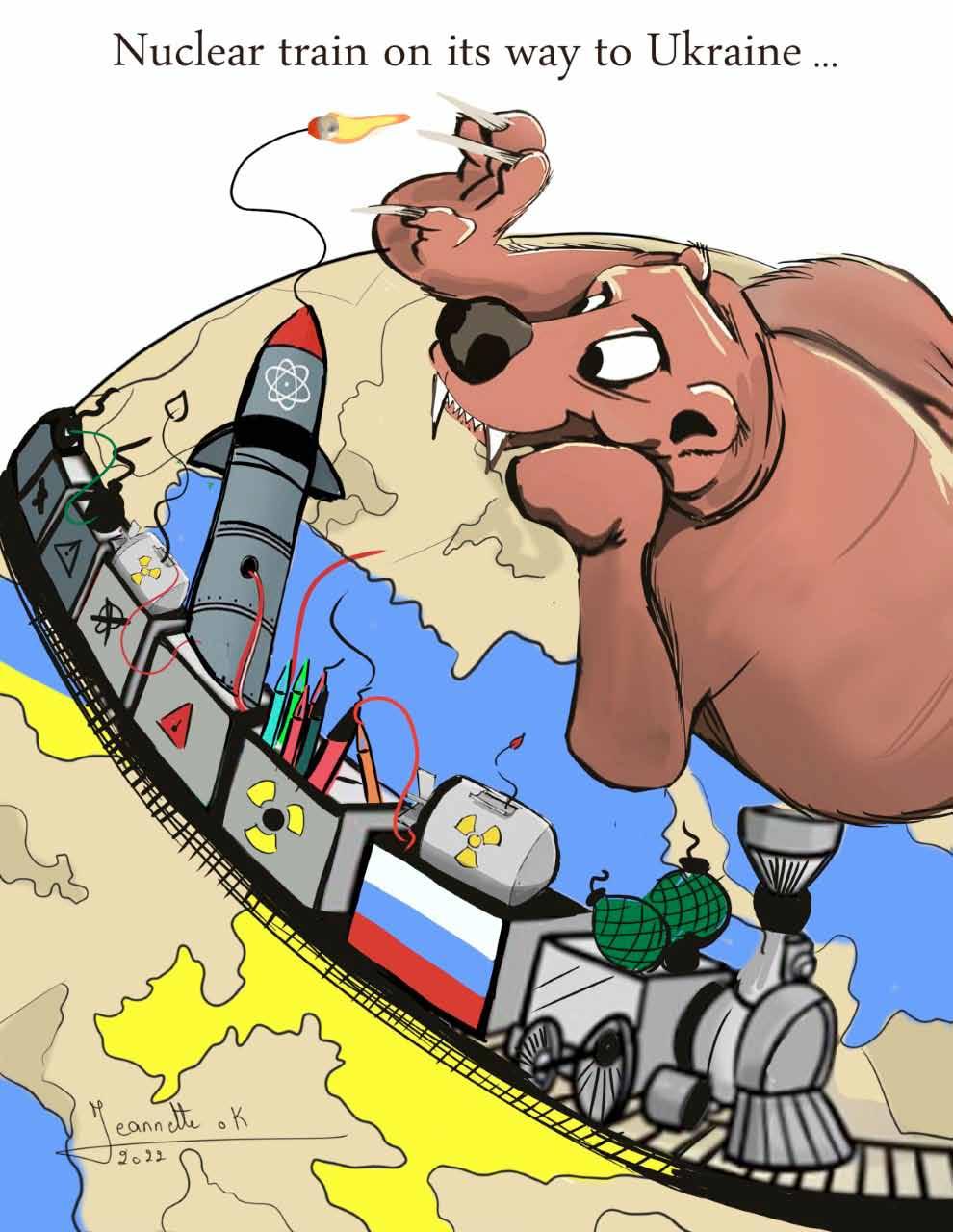




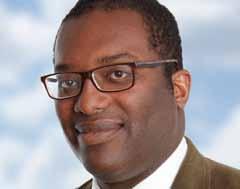
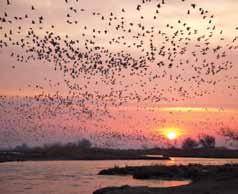


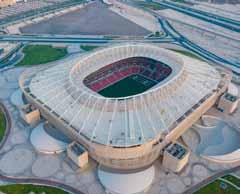
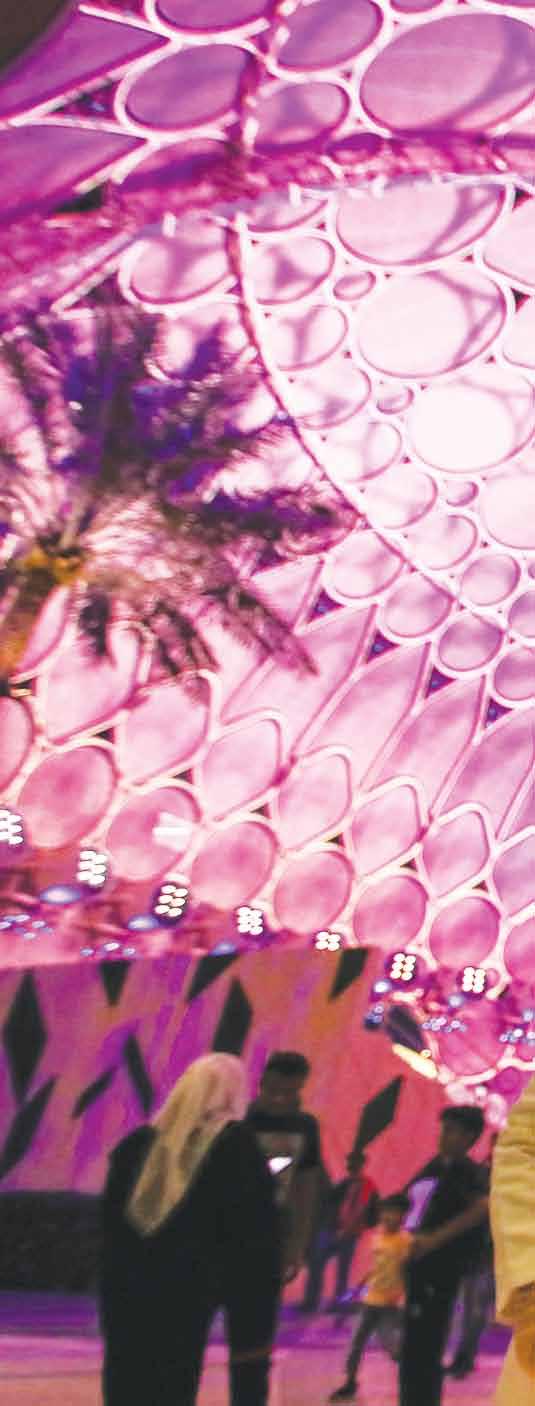
People gather at Al Wasl Dome Plaza during the official opening of Expo City Dubai in Gulf emirate of Dubai, United Arab Emirates on 01 October 2022. Expo City Dubai site reopens its doors to the public after it was rebranded from EXPO 2020 Dubai. EPA
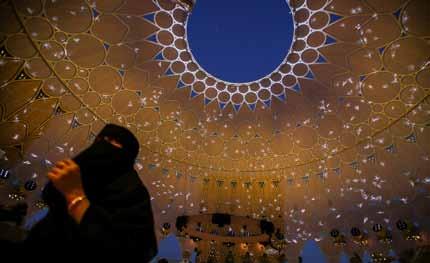


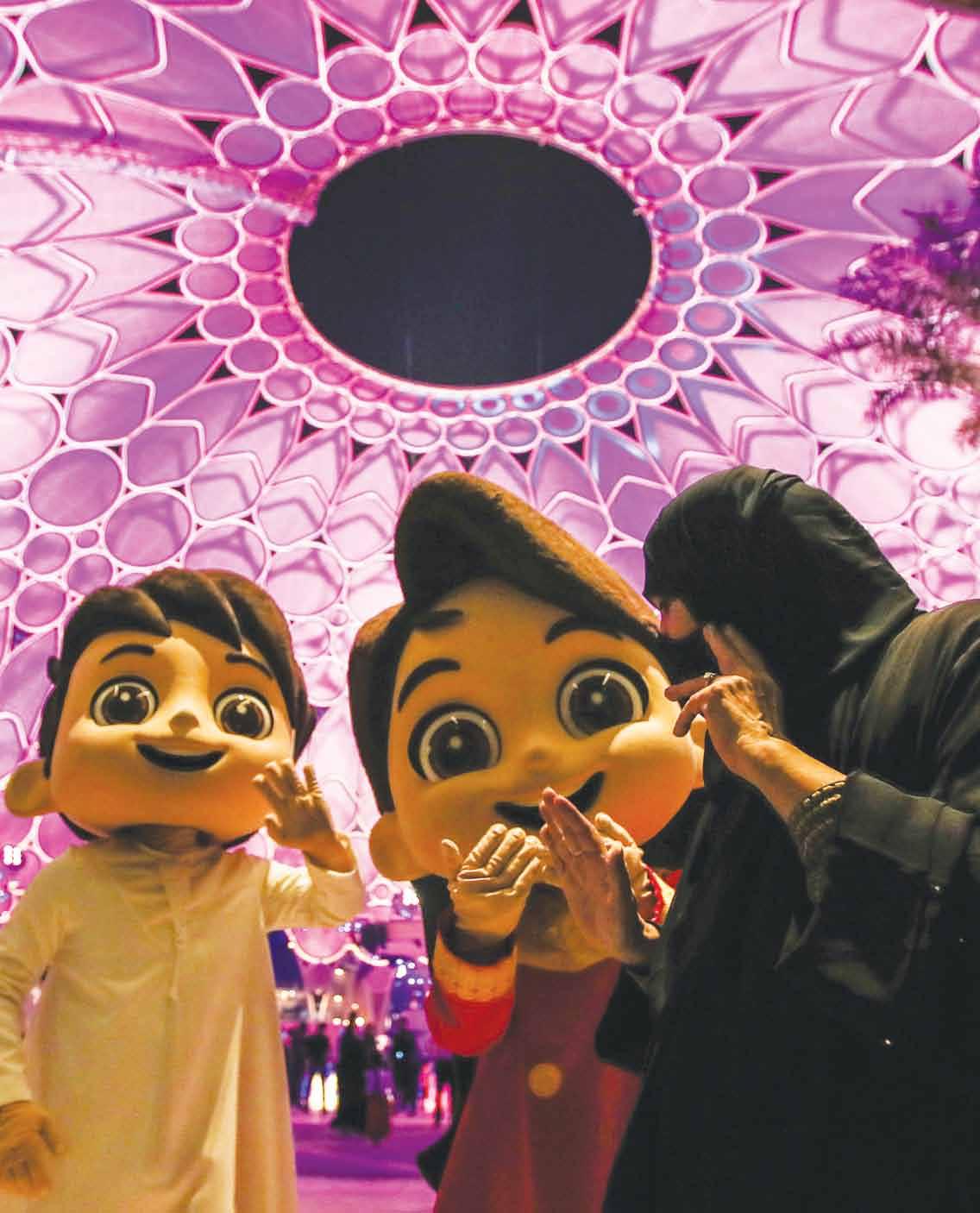
Museum of Islamic Art
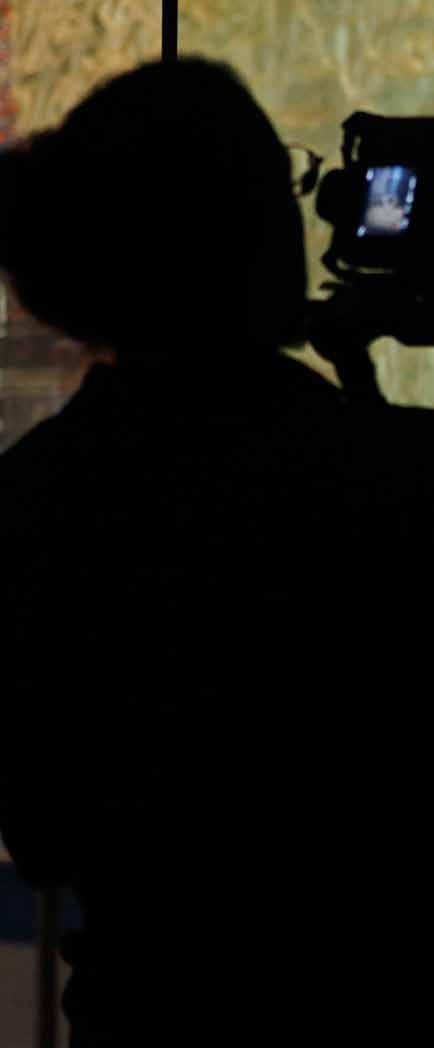
The reopening of Qatar›s Museum of Islamic Art ahead of the World
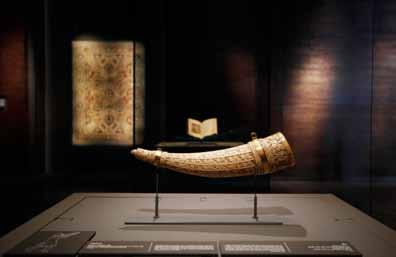
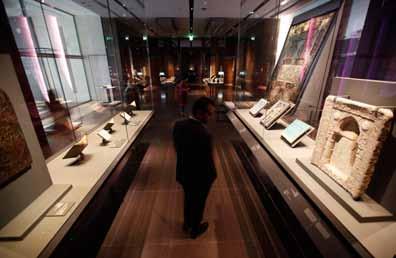
A person 2022 ,4 Cup - Museum of Islamic Art, Doha, Qatar - October looks at a piece of jewellery inside the Museum of Islamic Art during the reopening REUTERS

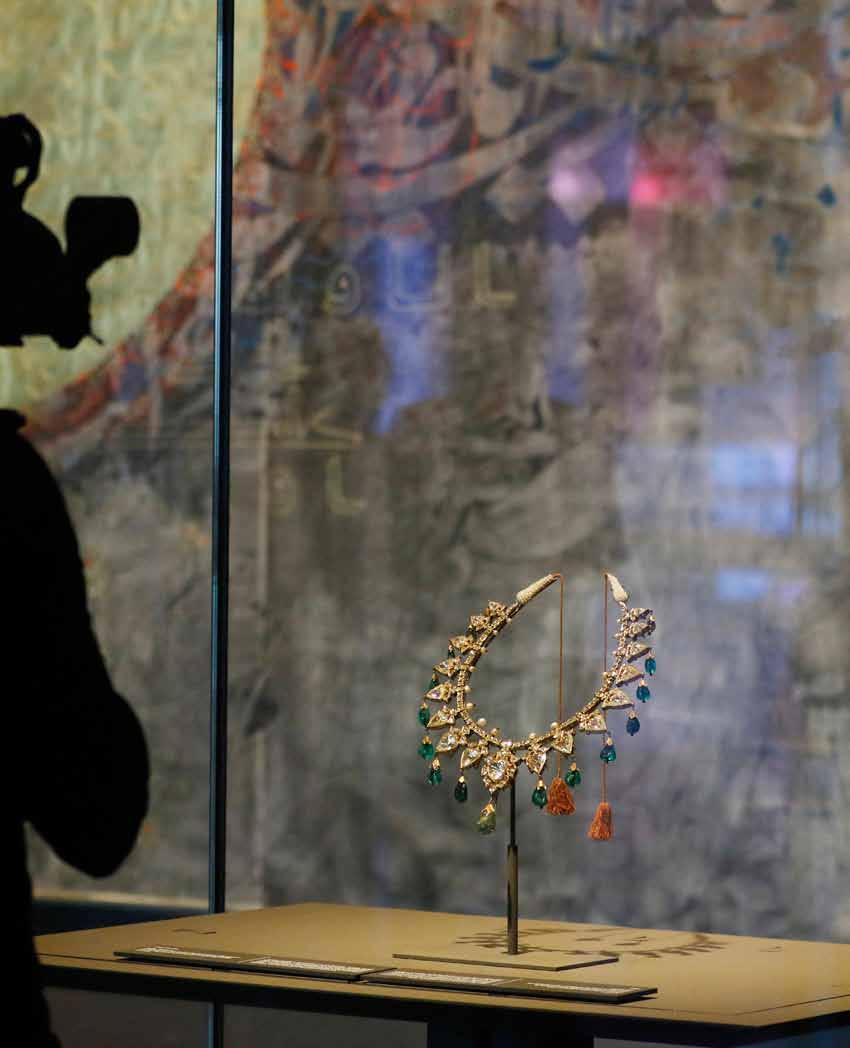
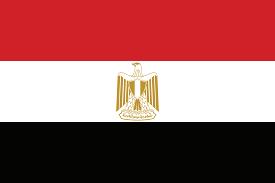
Prominent Egyptian archaeologists have renewed a call for the return of the Rosetta Stone from the British Museum to Egypt, 200 years after the deciphering of the slab unlocked the secrets of hieroglyphic script and marked the birth of Egyptology.
The archaeologists' online campaign has gathered 2,500 signatures so far and aims to "tell Egyptians what has been taken from them", said Monica Hanna, acting Dean of the College of Archaeology in the Egyptian city of Aswan.
The Rosetta Stone dates to 196 BC and was unearthed by Napoleon's army in northern Egypt in 1799. It became British property after Napoleon's defeat under the terms of the 1801 Treaty of Alexandria, along with other antiquities found by the French, and was shipped to Britain. It has been housed at the British Museum since 1802.

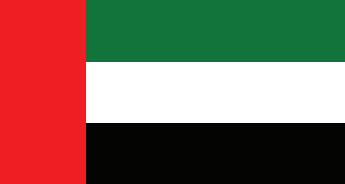
A Lebanese parliamentarian on Wednesday entered a bank branch near Beirut, demanding some of her trapped savings to cover medical expenses.
Cash-strapped Lebanon in recent weeks has witnessed a surge in depositors storming bank branches to forcefully withdraw their locked savings as the country’s economy continues to spiral. On Tuesday, depositors stormed at least four banks, two of which were armed. Lebanon’s cash-strapped banks have imposed informal limits on cash withdrawals since late 2019. Since then, three-quarters of the population plunged into poverty, and the Lebanese pound lost some 90% of its value against the dollar.
Saudi Arabia in 2029 in futuristic city
The Olympic the Saudi that is planned 2026.
“The deserts soon be a OCA said decision.
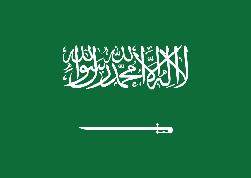
Arabia will host the Asian Winter Games mountains near the $500 billion city project Neom.
Olympic Council of Asia on Tuesday picked candidacy that centers on Trojena planned to be a year-round ski resort by
deserts & mountains of Saudi Arabia will playground for Winter sports!” the in a statement announcing its
The United Arab Emirates' non-oil private sector maintained brisk activity growth in September, albeit at a slightly slower pace than August, as new business drove gains in output and employment, a survey showed on Wednesday.

The seasonally adjusted S&P Global UAE Purchasing Managers' Index (PMI) fell to 56.1 in September from 56.7 in August, which was a 38-month high and remained well above the series average since 2009 of 54.2.

Iraq's oil minister Ihsan Abdul Jabbar said on Wednesday that his country hopes that the OPEC+ decision to cut production by 2 million barrels per day will contribute to world market stability and support crude prices, the state news agency reported. Abdul Jabbar added that Iraq aims to maintain its benchmark production level which was set in agreement with OPEC member countries in July 2021. He also stressed the country's exports will not be a ected by the cut.

An earthquake with a magnitude of at least 5.4 struck northwestern Iran on Wednesday, and Iranian state media reported that some 580 people were injured.
"This earthquake has so far left about 580 injured and fortunately no one lost their life in this incident," Mohammad Hassan Nami, head of the state crisis management agency, was quoted as saying by the o cial news agency IRNA.
The quake's epicentre was close to the town of Khoy in the province of West Azerbaijan.

OPEC+ agreed on steep oil production cuts on Wednesday, curbing supply in an already tight market, causing one of its biggest clashes with the West as the U.S. administration called the surprise decision shortsighted. OPEC's de-facto leader Saudi Arabia said the cut of 2 million barrels per day (bpd) of output - equal to 2% of global supply - was necessary to respond to rising interest rates in the West and a weaker global economy.
Suspected Chinese hackers tampered with widely used software distributed by a small Canadian customer service company, another example of a "supply chain compromise" made infamous by the hack on U.S. networking company SolarWinds. U.S. cybersecurity rm CrowdStrike said in a blog post it had discovered malicious software being distributed by Vancouver-based Comm100, which provides customer service products, such as chat bots and social media management tools, to a range of clients around the globe.
The Treasury Committee in Britain's parliament said on Tuesday that nance minister Kwasi Kwarteng will bring forward the date of the government's next scal statement to this month, lawmaker Mel Stride said. A government source said on Monday that Kwarteng will announce the medium-term scal plan in October, sooner than his original planned date of Nov. 23. Investors are concerned about the cost of Kwarteng's tax-cutting plans.

President Vladimir Putin signed a law to incorporate four partially occupied Ukrainian regions into Russia on Wednesday, in what Kyiv called the act of a "collective madhouse" at a time when Russia's forces have been eeing from the front lines.
The new law would incorporate around 18% of Ukraine's territory into Russia, equivalent to the area of Portugal, in Europe's biggest annexation since World War Two.
Russia does not fully control any of the four provinces it claims to have annexed, however, and Moscow has yet to demarcate what it now asserts to be Russia's new borders.

At least 10 trainee mountaineers died Tuesday after being swept away by an avalanche in the Himalayas in northern India, media reports said, as rescuers searched for 11 others missing.
The United States accused China and Russia on Wednesday of enabling North Korean leader Kim Jong Un by protecting Pyongyang from attempts to strengthen U.N. Security Council sanctions imposed over its nuclear weapons and ballistic missile programs. "The DPRK (North Korea) has enjoyed blanket protection from two members of this council," U.S. Ambassador to the United Nations, Linda Thomas-Green eld, said. "In short, two permanent members of the Security Council have enabled Kim Jong Un."
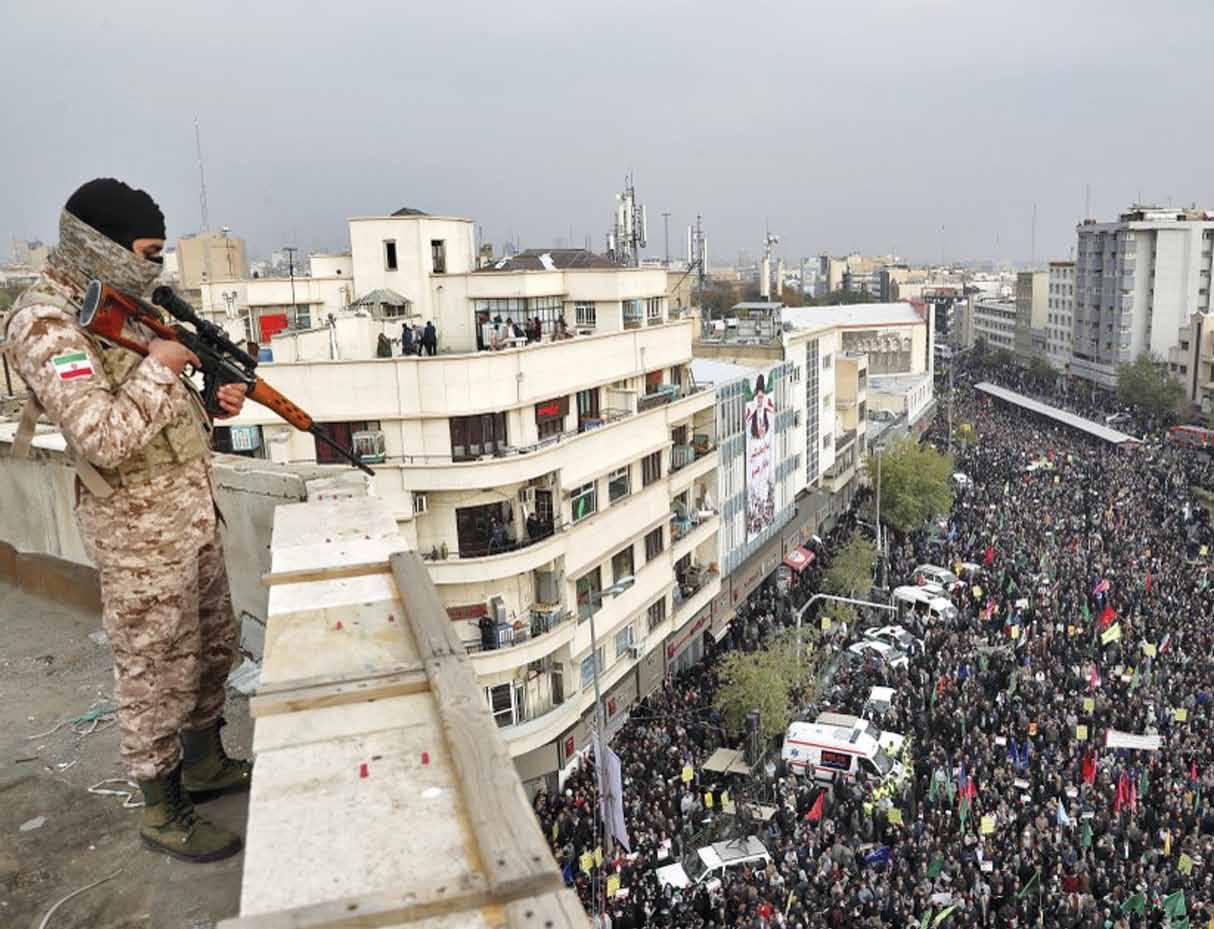 By Suzan Quitaz
By Suzan Quitaz
The Islamic Republic of Iran enters its fourth week of nationwide protests despite the harrow ing pattern of deliberately firing live ammuni tion at protesters as well as the rising death toll. Anti-regime chants are still echoing in every city
and village in Iran and more people are joining the protests in defiance of a ruthless crackdown by Iran’s security apparatus.
The protests that are taking place are different to ones that were seen in 2009 or 2019. The current uprising is broad-based and inclusive, crossing through ethnic and class lines. Iran as
FILE - In
2019, file photo, an Iranian soldier stands guard overlooking a pro-government rally organized by authorities in Tehran, Iran, denouncing violent protests over a government-imposed fuel price hike. (AP Photo/Ebrahim Noroozi, File)
a whole is revolting: the rich urban residents have come out alongside the poor. The youth are there, and so are their parents, alongside Iran’s non-Persian national communities –the Kurds, Baluchis, Azeris, Turkmen and Iran’s Arab community.
The uprising was triggered by the death of a 22-year-old Kurdish women from Saqqez in the north-western region of Rojhelat, Kurdis tan. Her name is Zhina Amini, but her fam ily were not allowed to register her Kurdish name, hence on official documents her name is Mahsa Amini.
Zhina has given a human face to all of Iran’s people who have been long suffering under the oppressive Iranian regime. In the face of the common injustices that every Iranian experiences, ethnic, class or religious differ ences became insignificant.
Hundreds of thousands of Iranians have taken to the streets in a show of solidarity with Zhi na’s family but also to voice their own anger and demands of “regime change.” More than 150 people have lost their lives, thousands were injured and many more have been de tained by the police.
In spite of this, in his first remarks on the up rising, Ali Khamenei, Iran’s supreme leader, gave a strong backing to the security forces and accused Iran’s enemies to be behind the unrest. “If there had not been issue of the young woman’s death, they would have used another pretext to stir up unrest and riots at this time,” Khamenei said. On Monday, 3 October, Khamenei fired a number of tweets, one of which declared, “I openly state that the recent riots & unrest in Iran were schemes de signed by the US; the usurping, fake Zionist regime; their mercenaries; & some treason ous Iranians abroad who helped them.” Khamenei’s words should not come as a sur prise as his oppressive government has prov en to be intolerant of any domestic dissent and opposition. The country’s whole population has suffered enormously from this authoritar ian theocratic rule. However, while all of the world’s media are focusing on Tehran, Iran’s ethnic minorities are disproportionally suffer ing. The Iranian security forces’ response to the protesters differs by region. Compared to
the central parts of Iran, peripheral regions such as Khuzestan and Kurdistan (populated by Arabs and Kurds, respectively) had higher rates of death and arrest of protesters. “Zhina Amini was not killed because she wore her hijab loosely – she was killed be cause she is Kurd,” Hana Yazdanpana Hana Yazdanpana from the Media Depart ment of Kurdistan Freedom Party (PAK), told Majalla that the Iranian regime is aware that there is a lot of focus on Tehran from international media outlets. So there is less brutality committed there. But in Baluchistan and the Kurdish region the government has gone in ruthlessly. “Right now (5th of Oc tober) I received news that the Iranian army is mobilizing at Baneh’s border with heavy weaponry. We expect it to be deployed in the Kurdistan Region soon,” said Yazdanpana. Yazdanpana told Majalla that all the Kurds know that Zhina wasn’t killed because she wore her hijab loosely. Yazdanpana further said that the Iranian regime wanted “to hu miliate the Kurds once again to make them an example for the Persians and the people in Tehran that the penalty for a loose hijab is death like Zhina’s.” She continued explaining to us “that there are many minorities in Iran so there are many aspects to this nationwide uprising. These demonstrations have many dimensions, each of which belongs to an op pressed nation that has been under torture for 43 years. As for us Kurds and PAK, we are not satisfied with anything less than our liberation, freedom and a right to statehood. This is evidenced by the speeches, writings and placards of the demonstrators who said: ‘We are not Iranians.’”

Hundreds of thousands of Iranians have taken to the streets in a show of solidarity with Zhina’s family but also to voice their own anger and demands of “regime change.”
The Kurdish Region of Iran, called by the Kurds Rojhelat or Eastern Kurdistan, is the most militarized part of Iran since 1979. Among Iran’s ethnic minorities, the Kurds have been the most vocal in expressing their opposition and rejection to the authoritarian regime of Iran.
Rojhelat is located in western Iran and has
been inhabited by Kurds for centuries until the present day, dating back before the Islam ic invasion of the 7th century. The Kurdish population of Iran is estimated between 1012 million and live mainly in the provinces of Ilam, Kermashan, Kurdestan, Loristan and the West Azerbaijan Province. The Rojhelat region shares its borders with parts of Iraq and Turkey which are also inhabited by the Kurds.
Kurdish nationalism and the aspirations of es tablishing a homeland, Kurdistan, go back to the 10th -12th centuries AD. More recently, in the region of Mahabad in West Azerbaijan Province, several Kurds from Iraq and Iran established the “Republic of Mahabad” in 1941, with the support of the Soviet Union. In 1946 when Soviet Union pulled out of Iran, the Iranian regime brutally invaded Mahabad and it leaders were publically hanged and ex ecuted.
Kurds faced substantial political oppression during the Pahlavi rule, and Kurds, like many Iranians who actively supported the revolu tion of 1979, fell victim to Ayatollah Khomei ni’s promises of a fairer and just Iran. After
FILE - In a Nov. 25, 2019, file photo, a demonstra tor chants slogans while holding up an Iranian national flag during a pro-government rally in Tehran, Iran, denounc ing violent protests over a government-imposed fuel price hike. (AP Photo/ Ebrahim Noroozi, File)
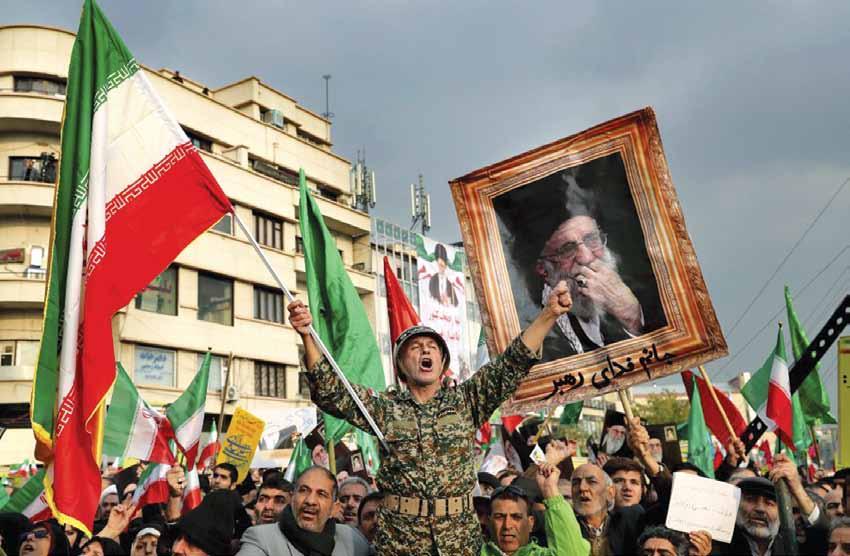
As protests sweep Iran’s big “Persian” cities, the IRGG is committing war crimes against Iran’s marginalized communities, mainly by using horrific brutality against the Baluchi and Kurds.
In this Tuesday, Sept. 20, 2022, photo taken by an individual not employed by the Associated Press and obtained by the AP outside Iran, protesters throw stones at anti-riot police during a protest over the death of a young woman who had been detained for violating the country’s conservative dress code, in downtown Tehran, Iran.
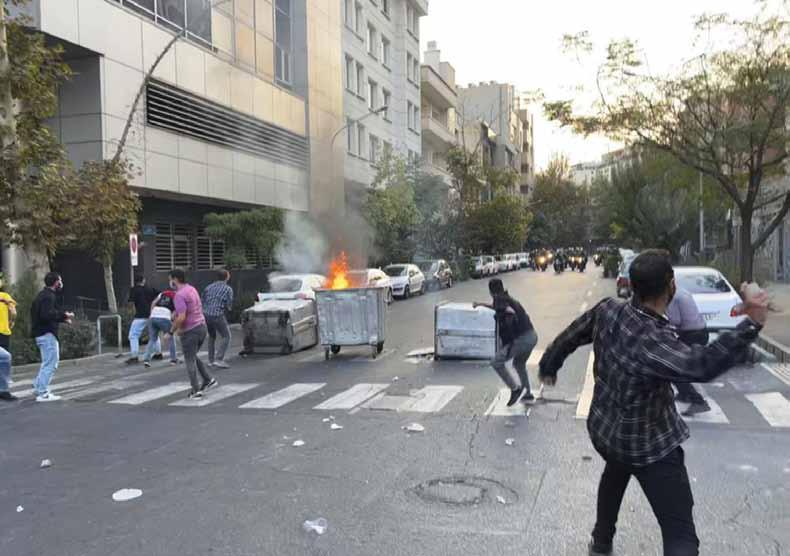
the revolution, Khomeini viewed the Kurds with hostility and saw them as dangerous op ponents to his newly established Islamic Re public of Iran. Bloody armed conflict broke out as Khomeini tried to establish control in Rojhelat. Tens of thousands of Kurds were killed and more were imprisoned as these and other serious human rights violations were committed against the Kurds since 1979.
Ali Khamenei’s recent tweets about the cur rent unrest being orchestrated by Iran’s en emies, is a four-decade old mantra. Back in the 1980s when Kurdish parties and activi ties called for equal citizenship, the regime labelled the leaders of the Kurdish movement as “corrupters of the Earth,” accusing them of being sponsored by foreign powers: USA, Israel and Saudi Arabia. Many media outlets have neglected to report to their viewers that the current uprising in Iran actually began at Amini’s funeral in her hometown. It is in Rojhelat where it all start ed and spread like a wildfire all over Iran, spi ralling into the biggest show of opposition to Iran’s oppressive clerico-fascist rule since the protests of 2009 and 2019.
The current uprising is broadbased and inclusive, crossing through ethnic and class lines.
Iran’s Islamic Revolutionary Guard Corps (IRGG) has always been intolerant of un rest among ethnic national communities. As protests sweep Iran’s big “Persian” cities, the IRGG is committing war crimes against Iran’s marginalized communities, mainly by using horrific brutality against the Baluchi and Kurds.
Majalla, spoke to Hengaw, a Human Rights organisation that covers Human Rights Vio lations in Kurdistan (Iran). The organiza tion also shared with us harrowing images of Kurds killed and injured by IRGG attacks on Kurdish towns and villages. One of those heart-breaking images is of Kurdish man who lost his wife and infant child. He is see ing leaving the hospital with the dead infant on his arm.
On September 28, the IRGC also fired rockets and drones at the headquarters of the Iranian Kurdistan parties (PDKI, PAK, Komalah). The headquarters are located in the Au tonomous Region of Kurdistan in Iraq. Six members of the PDKI (Democratic Party of Iranian Kurdistan) six members of the PAK (Freedom Party of Kurdistan) and two mem bers of the Komalah were killed in this attack. In all, a total of 13 people lost their lives. The attacks on the Autonomous Region of Kurdistan have further angered the Kurds in Iran. Kurdish political parties there called for a strike in Iranian Kurdistan to condemn the Iranian regime’s attack. The population responded to this call on October 1st with strikes that took place in over 20 cities in Ira nian Kurdistan. All shops remained closed that day.
Again on Saturday the 1st of October, IRGG attacked Iraqi Kurdistan. A senior member of Komalah, an exiled Iranian Kurdish opposi tion party, told Reuters that two party offices in Halgurd Mountain in Iraq’s Erbil were struck in Iranian shelling. A Kurdish security official said Iranian artillery also shelled the Choman district in Erbil.
On October 4, Iranian forces bombarded sev eral villages on the border near the town of Penjwen in the Sulaymaniyah Province in Iraqi Kurdistan.
The United Nations said that Iranian attacks
last week hit Iranian refugee settlements across the border in Iraqi Kurdistan. Local of ficials said at least nine civilians were killed and dozens more injured.
Since last week, IRGG’s strikes on Kurdish villages and towns in the Kurdish region of Iran, have displaced more than 700 families. On Saturday, 1 October, another hundred families were forced to flee after the IRGG renewed shelling on the village of Choman, near the Iran-Iraq Kurdish border. IRGG attacks on Iraqi Kurdistan has drawn widespread condemnation from Kurdish and Iraqi officials, as well as world leaders. Saudi Arabia’s foreign ministry released a state ment announcing that: “The Ministry of For eign Affairs expressed the Kingdom of Saudi Arabia’s strong condemnation of the Iranian attacks on Kurdistan Region of the Republic of Iraq, killing and wounding a number of in nocent people.”
The Kurdish-Iraqi commander in charge of border areas, General Bahram Arif Yassin, said Iranian forces have beefed up troops on the border but so far has not tried to cross ing into the Iraqi Kurdish region. The Iranian government is blaming Kurdish groups for fomenting some of the protests that are grip ping the country.
The US has a military base in the Iraqi Kurd ish region and last week it shot down an Ira nian drone heading towards Erbil, the capital of Iraqi Kurdistan. Iran’s armed forces Com mander in Chief, Major General Mohammed Bagheri, warned the US army to not to inter fere, “the armed forces of the Islamic Repub lic of Iran will respond to their hostile meas ure (…) Tehran has complete and precise knowledge of U.S bases in Harir, Erbil and Duhok [Kurdish cities in Iraqi Kurdistan].”
The official from Hengaw who spoke to Ma jalla said it is important to highlight that this is not the first time the Iranian regime has fired rockets at the headquarters of the sev eral political parties in Iranian Kurdistan. In 2018 there was also a rocket attack on the
FILE - A woman shows a placard with a photo of of Iranian Mahsa Amini as she attends a protest against her death, in Berlin, Germany, Wednesday, Sept. 28, 2022. (AP Photo/ Markus Schreiber, File)

of Kurdistan Freedom Party (PAK), told Majalla that the Iranian regime is aware that there is a lot of focus on Tehran from international media outlets.
PDKI headquarters and a dozen members of the party were killed.
The official continued, “What would also be important to emphasize in connection with the protests: Kurds are doubly oppressed in Iran.
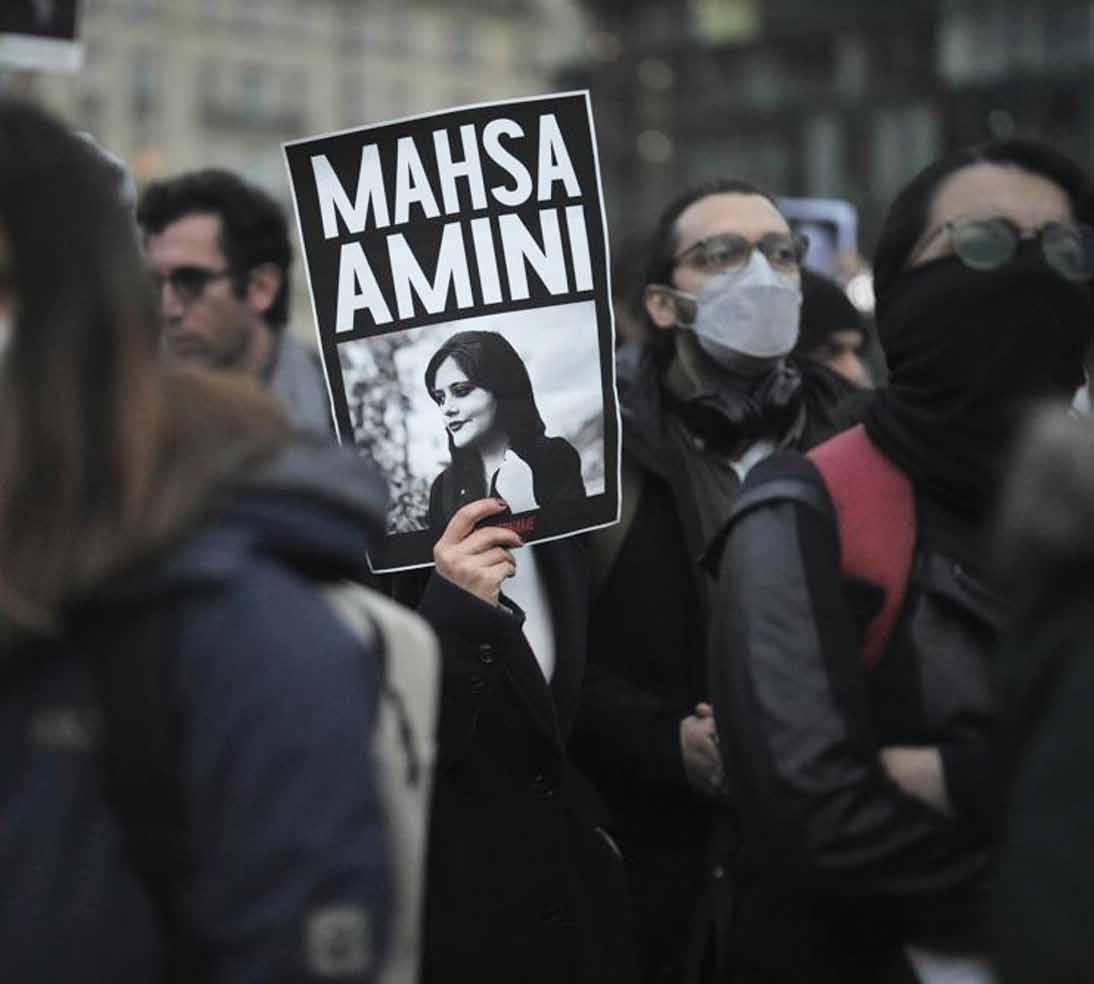
On the one hand as citizens of Iran, on the other collectively as a people. This means that there are reprisals that only affect the Kurds and the Kurds are also protesting against this oppression and for their freedom. Kurds are oppressed collectively as a people on a politi cal, economic, cultural and religious level.”
Since the uprising against the Iranian regime started in the Kurdish region, more than 25 Kurdish protesters have been killed, 1138 in
jured and more than 2000 have been arrested, according to Hengaw’s statistics from 4th Oc tober.
In Tunisia on December 17, 2010, Mo hamed Bouazizi, a poor street vendor, was once again harassed and humiliated by the local officials. He went the governor’s of fice to complain, but he refused to see him. With a sense of despair and hopelessness, Bouazizi set himself on fire and with it he sparked the Arab Spring. Nationwide pro tests broke out and the regime of Ben Ali was overthrown on 14 January 2011. Will Zhina Amini be Iran’s Mohamed Bouazi zi? Only time will tell…
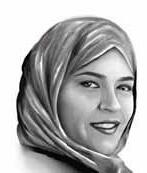
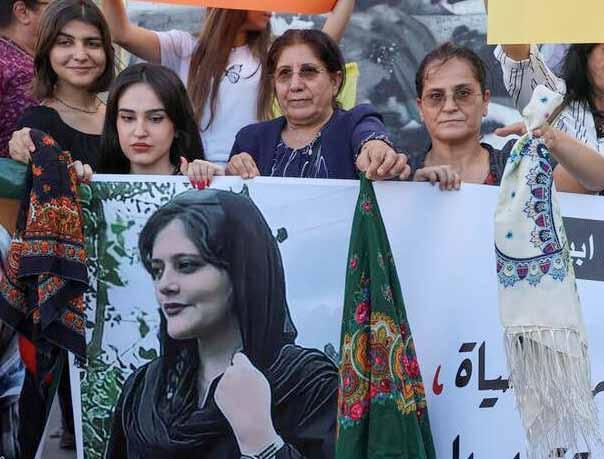 By Dalia Ziada
By Dalia Ziada
For more than three weeks now, Iran’s Mullah-led regime has been struggling to control nationwide protests led by young women. These fiery demonstrators are fed up with what they see as a religious-based tyranny that strips them of their basic individual freedoms. In standing up, they have unleashed a wave of popular anger against the hardline theo cratic regime that has shaken the throne of Supreme Leader Ali Khamenei and threatens to further damage Iran’s region al influence, particularly in the Levant. For Arabs and Turks, this could be an opportunity to pursue their own security
Women hold a picture of Mahsa Amini dur ing a sit-in following her death, at Martyrs’ Square in Beirut, Lebanon September 21, 2022. REUTERS/ Mohamed Azakir

goals, ones long thwarted by Iran and its proxies and militias, who spread across the Middle East in the aftermath of the Arab Spring.
In Iran, youth-led rebellions are not unknown. The current theocratic regime was founded in 1979 on the back of a revolution that was later labelled ‘Islamic’. In recent years, there have been several nationwide protests, aimed at such things as government cor ruption, economic failures, and social injustice. The most notable were the Green Revolution of 2009, which flared in response to accusations of presiden tial election fraud, and the Bloody November protests of 2019, which arose in response to rising fuel prices and corrupt practices.
Both drew thousands young people from across Iran. They quickly escalated their demands to include the overthrow of the regime. To quell the anger, the Is lamic Revolutionary Guards (IRGC) cut communica tions, including internet and phone connections, and used excessive force against the protesters. At least 70 civilians were killed in 2009, and more than 1,500 were killed in 2019.
These were the biggest, but there have been over 70 national protests in the past 15 years. Most end quickly. Yet the ongoing fury shows little sign of abating three weeks after Iranian women first took to the streets over the killing of Mahsa Amini, 22, an Iranian-Kurd, by the Islamic Guidance Patrol on 16 September. Amini was beaten to death under the eyes of her family after being arrested at a metro station in Tehran. Her offense? Not to wear a hijab, as per the Islamic Republic’s legal requirement for all women, even non-Muslim women.
To Iran’s youth, and especially to its young women, the unjustifiable assault and murder of Amini has been a mirror reflecting back an image of the miser able reality of life under a religious regime that sys tematically violates basic human rights. It has struck both a chord and a match. Unlike all other protests seen on Iranian streets of late, this one has not been motivated by political or economic concerns, but by the desire of the country’s youth to live a normal life free from fear of political repression or divine punish ment.
That is why, since mid-September, Iranian women of
all ages and social backgrounds have been burning their headscarves and cutting their hair in public - to show their liberation from the social grip of a theo cratic state. Their actions have broken the barrier of fear that has prevented women from expressing their individuality through clothing and appearance, box ing them into a cycle of adherence to the social and religious norms of the state. Even teenage girls have joined in, removing the hijabs that have been forced on them by schools.
During this deadly wave of protest, human rights groups say more than 100 people have been killed in clashes with security forces in 45 Iranian cities. The Iranian government puts that number at 60, while claiming that security forces have also been killed. Like in recent years, the IRGC dusted off its anti-pro test manual, but is fast losing power in face of highly disciplined protesters, because although successful in the past, cutting the internet and applying brute force has failed to deter these demonstrators. Some say Ira nians no longer fear dying in their fight for a normal life, asking: what do we have to lose, if what we have now is so very little?
If things weren’t bad enough for the Mullahs, Amini was a Kurd, meaning that the fury has spread well be yond Iran’s borders. She was a member of a Kurdish family living in the north-west Iranian city of Saqqez, but demonstrators have gathered in Kurdish cities far beyond, in places like northern Syria and Iraq, where hundreds of women have taken to the streets to set their headscarves on fire and cut their hair in soli darity with their struggling Iranian sisters. In Iraq’s semi-autonomous Kurdistan region, activists gath ered outside the United Nations headquarters to call for justice for Amini. In western capitals, it has been a similar story. Wherever the rallies took place, the chants were the same: ‘Women – Life – Freedom.’ Protesters even took Amini’s Kurdish name, Jina, meaning ‘life.’
In recent years, there have been several nationwide protests, aimed at such things as government corruption, economic failures, and social injustice.
Human rights groups say she and her family suffered from police cruelty because of their ethnicity. To observers, this is nothing new - the Iranian regime has long been accused of systematic discrimination against its sizeable Kurdish minority of 15 million, which represents about 17 percent of the Iranian population. Most Kurds are poor, largely because they are poorly provided for, often deprived of basic government services. Almost half of Iran’s Kurds are young and most are well educated, despite their tough living conditions.
Their perceived threat, at least as far as the Iranian

authorities are concerned, stems in part from the fact that Kurds are more inclined to hold secular, rather than religious values. This, together with their politi cal strength in opposition, has led some establishment figures in the Islamic Republic to see them as an ex istential threat. Indeed, Ayatollah Khomeini, Iran’s first Supreme Leader, argued for their elimination, citing Kurds’ Marxist beliefs, which he considered to be contradictory to Islamic belief.
Inside Iran, eyebrows were raised when Amini’s Iraqbased cousin was revealed in an AFP interview to be a member of the Communist Komalah Party, which has a history of rebellious activities against Iran, hav ing been at odds with Tehran for decades. The Party seeks autonomy for Iran’s Kurds, particularly in the north-west.
The temperature rose a notch or two at the end of September. With demonstrations in their twelfth day, Tehran targeted sympathising Kurds in neighboring territories with missiles and drones. The IRGC at tacked the Kurdish cities of Koya and Qala in north ern Iraq, close to Erbil, on 29 September. It left 17 dead, including a pregnant woman, and 58 civilians injured. The IRGC said it had struck Iranian Kurd ish separatists, who it calls “terrorists”, and said its
That is why, since midSeptember, Iranian women of all ages and social backgrounds have been burning their headscarves and cutting their hair in publicto show their liberation from the social grip of a theocratic state.
over story
People protest outside the Iranian consulate in Istanbul on September 21, 2022, following the death of a Kurdish woman after her arrest by Iranian morality police in Tehran.
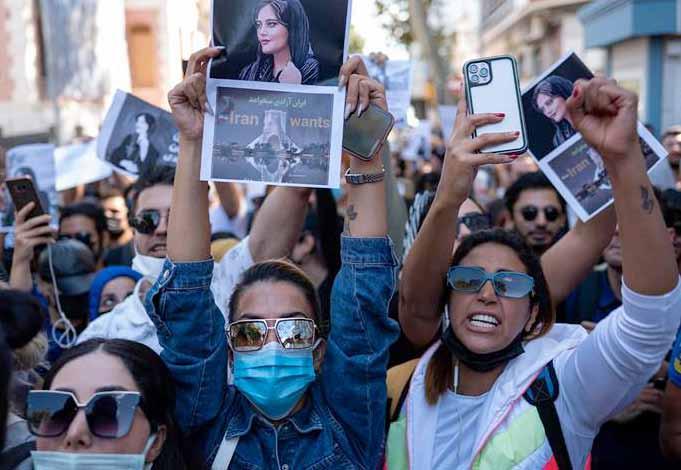
Photo: Yasin Akgul/AFP
strikes would continue “with full determination, un til the threat is effectively repelled”.
To Kurds outside Iran, Iranian attacks against them are nothing new. The central government of Iraq, the regional government of Kurdistan, and the Arab League have all condemned Iranian aggression to wards its neighbour, but no unified Arab action has been taken to deter Tehran from continuing. The Iraqi government has accused Iran of “provoca tive unilateral action that complicates the security scene, casts a shadow over the region, and will only contribute to more tension.” It has also denied that there is any military justification for the attacks and warned that it “will use the highest diplomatic in struments to prevent it from happening again in the future”.
Shortly after the 29 September attack, Khamenei sought to portray the Amini protests as a US-led western conspiracy against his government. The next day, an IRGC commander blamed Israel for the mis sile attacks, saying the Israelis were “using anti-Rev olutionary Guard bases in the north of Iraq to their advantage”. He said Iran had only acted after having repeatedly asked the Iraqis to do so. He claimed that the IRGC attack had successfully struck 40 targets run by Israel and Kurdish separatist groups, citing no evidence.
All of this has left Israel, Turkey, and the Arab Gulf countries closely monitoring developments. None have yet commented or intervened. They know that the current women-led protests may not topple Teh ran’s hardliners, yet they also sense a shifting geopo litical dynamic, one that could favour Turkey - Iran’s staunch ‘frenemy’ - knowing Ankara’s security ob jectives and military targets along its southern and eastern borders in the Levant and Caucasia.
Meanwhile, Arab Gulf countries burned by Iran’s po litical and ideological hostility now sense a chance to benefit from any geopolitical rebalancing, especially if their newly repaired relationship with Turkey con tinues. At a personal level, and at an international geopolitical one, removing a hijab has never meant more.
The new Chancellor of the Exchequer, Kwasi Kwarteng is very smart – or so we are constantly being informed.
Of course, he also has his detractors. It’s only to be expected when your first budget is a ‘fiscal event’ in the midst of a cost-of-living crisis that makes tax cuts you can’t be bothered to cost, hands taxpayers’ money over to the already obscenely rich, removes the cap from bankers’ bonuses and almost crashes the sixth largest economy in the world. He has variously been referred to this week as amateurish, naïve, arrogant, a novice, a rookie, plain stupid, a wonk (coming from former wonk, Nick Bowles, who has since seen the light) and ‘superficially black’ (well done, Rupa Huq, for finding the most offensive and irrelevant way of criticising him).
As I said, he has his detractors, but what is it about politicians who consistently display scarcely any redeeming qualities in public, that there are always loads of people at hand to assure us of how wonderful they are away from the public gaze? It›s as if these witty life-and-souls of their political parties become stammering wall flowers the minute they take on a public role, and this may be the case with chancellors more than with any other political job title.
Maybe the days of the entertaining politician are over. Once again, this week, I have felt the absence of the long-forgotten George Brown, who once got ‘tired and emotional’ (Private Eye’s euphemism for intoxicated) at a diplomatic function in South America. Somewhat unsteady on his feet, he started hitting on a tall, elegant lady in red, requesting the honour of a dance. The lady in question, who is said to have been taken aback, eventually found the presence of mind to reply “I will not dance with you for three reasons. The first is that you are drunk. The second is that the band is not playing a waltz, but the Peruvian national
anthem. And the final reason is that I am the Cardinal Archbishop of Lima.” It’s hard to say how this story tallies with Brown’s own statement that “Many members of parliament drink and womanise – now, I’ve never womanised.” He did a brief stint at the Department of Economic Affairs, but never made it to Number Eleven. Surely the most entertaining chancellor Britain never had and one who, in his most tired and emotional state, could have made better decisions than the outwardly sober decisionmakers of the present day.
Actual chancellors have traditionally been sober, often to the point of lugubrious. Even George Osborne, who became so chirpy the minute he left the job, only really sparkled once when he was in it. His shadow, John McDonnell, had illadvisedly handed him a copy of Chairman Mao’s Little Red Book. “Oh look,” said Osborne, turning to his colleagues on the Conservative benches, “it’s his personal signed copy!” The glee on his face was boyishly unrestrained. Boy George was not his nickname for nothing. The laughter on the Tory benches, meanwhile, was convulsive.
Other chancellors have wallowed in their misery, presumably on the pretext of maintaining a poker face for the benefit of the markets. Alistair Darling was so ostentatiously miserable he actually confessed to being a Leonard Cohen fan. Only in Britain could it be strangely reassuring to know that the Chancellor of the Exchequer, after a difficult day contending with the credit crunch and the subprime mortgage crisis, found ‘music to slit your wrists by’ relaxing. But it was his boss, Gordon Brown, who as chancellor had been the stereotypically dour Scot in all his public appearances, with the excruciating exception of a short video where he confessed to a love of the Arctic Monkeys and grimaced in short spasms, as if his facial muscles had no organic memory of smiling and could only manage the illusion of cheerfulness in fits. No one was fooled when the spin doctors assured us that Gordon was a brilliant and funny storyteller. In contrast, anecdotes about Gordon hurling staplers across the room were readily believed. It seemed like exactly the kind of thing he would do.
Now, however, that we are blessed with a chancellor who has rocketed to fame on the back of apparently childlike incompetence, we are told that he is very clever. He has a doctorate in economic history, having studied the gold and silver standards of the seventeenth century; he is multilingual; he pens ditties in Latin; he has written a book on the Empire and contributed to another one entitled Britannia Unhinged – sorry, Unchained. Ken Clarke, the only chancellor who ever took his paperwork with him to Ronnie Scott’s Jazz Club and possible contender for cuddliest ever occupant of Number Eleven, thinks Kwasi’s jolly clever and likeable.
Actual chancellors have traditionally been
often to the point of
These plaudits are in inverse proportion to the kind of flack Kwarteng has been getting from (bear with me, the list is quite extensive): the markets, the media, every economist imaginable, including Varoufakis and Blanchflower (but not Patrick Minford), disgruntled civil servants, ex-Governors of the Bank of England, the IMF, retired mandarins, the OBR, the Americans, my mum, etcetera, etcetera. They are all apparently unaware that this man is as clever, charming and witty as Dorothy Parker when in the privacy of his own social circle, and that (as Parker might have put it) he speaks six languages, though he can’t say “No” (to a banker) in any of them. Truth is that, in common with the new prime minister, the new chancellor cannot begin to translate any of his consummate social skills into his public utterances. He mostly prefers not to say much.
What a pity that neither member of this double act for the new fiscal era was around to learn from the master. This is no time to get tearfully nostalgic – I have no wish to intrude on Michael Fabricant’s private grief, nor to mock the genuine heartache of Nadine Dorries – but if his successors had one percentile of Boris Johnson’s powers of communication… well, enough said. Return of Boris
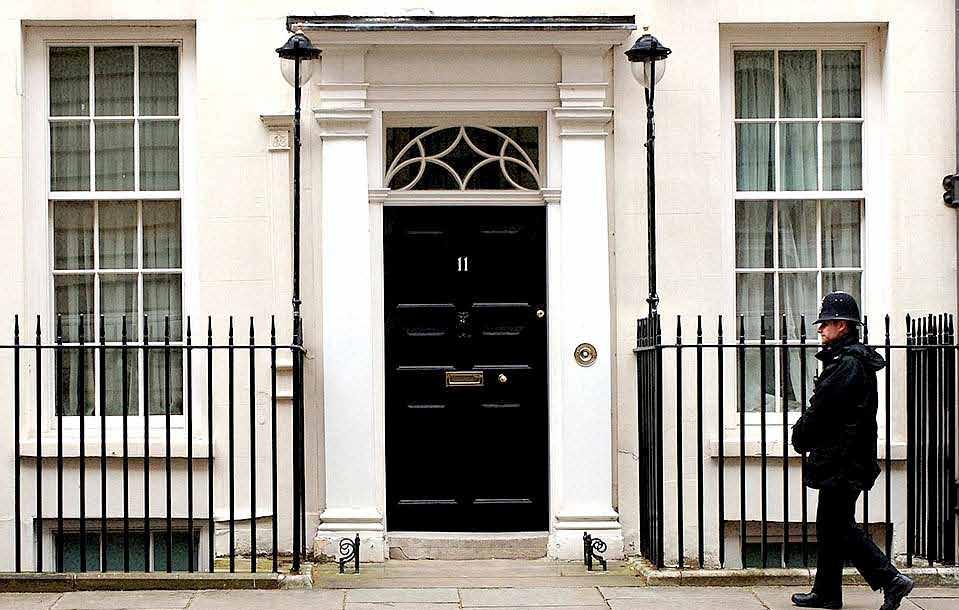
I was reminded of the extraordinary gift Johnson had only the other night, by Kenneth Branagh in ‘This England,’ purely because his portrayal of the great man failed so comprehensively to, well, portray it. How many more performances must I watch by Branagh when I don’t even like him? I might ask the same question regarding Emma Thompson. I have even blundered into films starring both of these pet hates of mine and may never fully recover. Clearly, if I ever have the misfortune to become a film critic, I shall have to adopt Theobald von Sacher-Masoch as my pen name.
So it was that, yet again, I found myself watching Kenneth Branagh in that helpless state of stupefaction associated with members of the Leporidae family when caught in footlights. I never learn. The memory was still as fresh as any psychic scar of the way he chose to portray Shakespeare. It was the nose, chiefly.
The nose has lodged itself in my brain. Given the amount I have written about noses, and the effect that the one they gave Nicole Kidman had on me, I am beginning to wonder, is prosthesis to blame for my mental distress, or some personal fixation on noses that dates back to the primal scene?
Now, in this cinematic re-enactment of the old buffer’s comical premiership, was another excuse for the Burbage of our age to remind us of his intimate thespian relationship, a kind of spiritual affinity, with the bard. Honestly, darling, I felt I was able to channel him. Yes, yet one more excuse for Branagh to recruit the old playwright, in the way dearest Larry [Lawrence Olivier] did that time, playing Henry V in wartime, in some corner of a foreign field – actually, the location was neutral Ireland and someone might have wondered if the extras, all Irishmen, would struggle to look patriotically stirred when a posh Englishman addressed them as his ‘band of brothers’. Larry’s response was to say “Try acting, dear boys!”
So here we have Boris – a classicist, y’know – indulging in wordplay as he triumphs at the General Election by casting himself as Augustus and saying he has got ‘Agrippa on Brexit’. Little play on words there, his Agrippa being Dominic Cummings. I have no trouble believing this was indeed the way he addressed his band of Brexiteers, but can anyone imagine him hanging onto his young and pretty wife by boring on with a constant stream of such stuff in private? Answer: the screenwriter could. Branagh’s Boris speaks exclusively in classical allusions and Shakespeare quotes, some delivered on sofas, others as they walk the dog around the grounds, yet others (and here the viewer’s disbelief
Maybe the days of the entertaining politician are over.Scene of the crime
Kenneth Branagh. It has allowed me to avoid thinking about the dynamic duo. That’s the ‘run dynamic’ duo, you understand, the duo that makes members of the Bank of England’s Monetary Policy Committee quake in their boots as they remember the run on Northern Rock. Far better to focus on Branagh’s speech at a window when he attempts ‘This septic isle’ in the voice of a defunct prime minister ineptly channelling Churchill. My God, the layers of theatrical prestidigitation boggle the mind! But all this is beginning to look and sound like displacement activity.

had to be suspended from a zipwire and left to dangle for minutes at a time) in the nuptial bed. The latter instance is about as unlikely as Eric and Ernie in a bed together, though I can’t decide whether Boris or Carrie deserve the role of Eric. Now, I am one of his sternest detractors (he has had some, it has to be said), but even I thought this depiction of our late prime minister was an outrageous parody of the truth. This lack of authenticity extended to his appearance. I think it’s fair to say that Johnson’s barnet was so dishevelled that hairdressers the world over shuddered at the sight. For the hair, Branagh should by rights have been dragged through a hedge backwards prior to a day’s filming, but this was obviously considered far too method. Instead, a blond Ken Dodd wig was preferred, meaning his hair looked unconvincingly shevelled. For his face to be convincing, the makeup department had two options: prosthetics or boiling his head. If you think of what was possible in the old days, when John Hurt could be transformed into the very image of the Elephant Man, you’re bound to wonder if there has been a decline in the art of rendering actors unrecognisable. In this respect, Branagh has been exceptionally ill-served in the past. I allude not only to the nose they gave him when he played the bard, but to the moustache of his Poirot. As usual when it came to portraying Boris, the greatest luvvie of the age was badly let down, this time by a quantity of whatever these people use, so heavy that his face was entirely devoid of movement; even one of Gordon’s spasms would have eluded him.
It is a relief, I admit, to devote all this mental energy to Boris Johnson and
I shall stop it, then, and describe a little of what life in this once-great-country – begging your pardon for being so ‘declinist’ – has been like this past week or so. Well, for one thing the BBC has devoted itself to teaching us the basics of economics, with sentences that begin ‘inflation is…’ and lessons on the difference between fixed and variable rate mortgages. I don›t remember signing up for this crash course (‘crash’ being the operative word here) in economics, though admittedly the people who voted for Brexit were in sore need of one. As we relax in the gutter together, sometime in the near future, finally reconciled, we Brexiteers and Remainers can discourse sagely on the pros and cons of fiscal events, and whether the orthodoxies regarding long-dated government debt are ripe for a rethink, as certain rethink tanks would have us believe. Ah yes, I can see it now: a kind of poor man’s version of the Roman orgy, but without the vomiting owing to a lack of actual food.
When Kwasi Kwarteng’s mini-budget/fiscal event first burst upon an unsuspecting world just over a week ago, the first impulse among aghast commentators was to accuse him of stupidity. This tendency was only confirmed as its consequences unfolded, with a massive drop in the value of the pound and a ‘run dynamic’ in the gilt markets, a hike in yields and panic selling, all of which the Bank of England had to mitigate with a cool 65£ billion in quantitative easing before people’s pension funds crumbled into dust.
Just listen to me, though. Who would have thought that I would be speaking this kind of language, with the deceptive fluency of an upper-intermediate student, within a fortnight of the proverbial waste product hitting the fan? The pundits were quick to accuse the mini-budget itself of A-level economics. Actually, I can attest that was an insult to people like me with an O-level in the subject, albeit grade B. It was even an insult to my nine-year-old self whose grasp of economics, though basic, stood me in such good stead when I was made biscuit monitor at primary school, and that’s despite the fact I had to deal in shillings and pence with only a rudimentary knowledge of the twelve times table. Soon
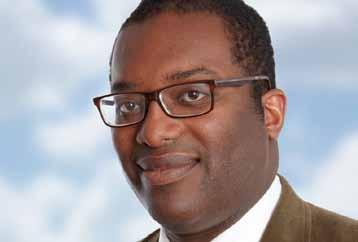
For Burke, this state of the mind was made more intense by obscurity, such as we encounter in darkness.Inevitably nicknamed ‘KamaKwasi’ by some of his detractors Skull for Mr Shakespeare!
afterwards, Margaret Thatcher snatched the free milk (and cheap biscuits) away from us, but at least we were blessed with decimalisation.
The stupidity theory breaks down, however, on closer inspection. Everyone acknowledges that Liz Truss, our new prime minister, is self-evidently clueless. This is the woman who said “I am prepared to be unpopular” in the belief that she would sound like a conviction politician. She said there would be no handouts. She has chosen a tax cutting agenda in the midst of a cost-of-living crisis. She spent four days in hiding while the pound and pension funds were in freefall, then emerged to give interviews to local radio stations, thinking they would not go hard on her. Despite having the perfect face for radio, it is coupled with a very imperfect voice. The radio hosts submitted her stupidity to levels of interrogation undreamt of in parliamentary committees. Television also proved a challenge for Truss. One only had to watch the way she paused after a question she hadn’t anticipated, the cogs visibly rotating in her head.
Her chancellor, however, is definitely not a dimwit, and I don’t say this because I am dazzled by his PhD in seventeenth century monetary policy, which actually puts him somewhat behind Jacob Rees-Mogg in the development of economics as the inexact science we know it for today. Despite my respect for a Leonard Cohen fan and former chancellor, I have to take issue with Alistair Darling when he describes the dynamic duo as ‘complete novices, suddenly being presented with a new toy to play with […] they didn’t understand what they were doing.’ Cohen’s ‘Tower of Song’ is a blunt rebuttal of this naïvety thesis: haven’t the rich got their channels in the bedrooms of the poor? Isn’t there a mighty judgment coming?
In short, the fact that murder is the work of a split second, doesn’t make it any less premeditated, and the premeditation behind this murderous economic strategy can be traced to a single address in Westminster, not far from the Abbey, in Tufton Street. There, in Number 55, resides a small colony of right-wing rethink tanks: the headquarters of the Taxpayers Alliance, for instance, and the offices belonging to the Global Warming Policy Foundation. Truss herself set up the Free Enterprise Group, which is in effect a parliamentary outpost of the most important occupants of Tufton Street, the Institute of Economic Affairs (IEA), whose director is Mark Littlewood. A trio of economic advisers – Professor Patrick Minford, Julian Jessop and Gerard Lyons, all of whom have helped shape Truss’s policies – have links to the IEA. Minford is a trustee, Jessop is an economics fellow and Lyons is an IEA author. Littlewood claims Truss has spoken at more IEA events than any other politician over the past twelve years.
The IEA sees itself as having a duty to ‘think the unthinkable.’
But what the denizens of Tufton Street really want to drop on the heads of the British public is nothing less than the raw ‘id’ of the Tory party. It is the purest form of free market economics or, if you prefer, the untreated sewage of the Tory party’s hidden agenda, similar to the views expressed in Britannia
Unchained, a book to which Truss contributed along with Dominic Raab and Priti Patel, and which includes such insights as:
“The key is to make sure that failure is survivable.” (Survivable for whom, one wonders)
“In the early stages of a project, failure need not be a disaster.” (Not disastrous for whom?)
Infamously, the book also asserts that Britons are “among the worst idlers in the world.” It is a free marketeers’ blueprint for an assault on tax, regulation
and what are described as the “perks” of the welfare state. Having said that, the message is not entirely reckless: ‘Governments that lose control of their finances,’ it says, ‘eventually lose control of their destiny.’ It isn’t easy to square such caution with the trauma we are currently witnessing. Nonetheless, more generally, the unthinkable is in plentiful supply: fat cut to the bone, the welfare state abolished, childcare cut back and the National Health Service incrementally privatised.
To understand the full horror of all this, we must go back to one of the founders of philosophical Conservatism. Sociopathology of this magnitude comes close to Edmund Burke’s descriptions of the sublime, which he saw as ‘productive of the strongest emotion that the mind is capable of feeling,’ what he called Astonishment, or ‘that state of the soul in which all its motions are suspended, with some degree of horror.’
For Burke, this state of the mind was made more intense by obscurity, such as we encounter in darkness. He notes how the ancient druids used darkness to create fear, performing ‘all their ceremonies in the bosom of the darkest woods, and in
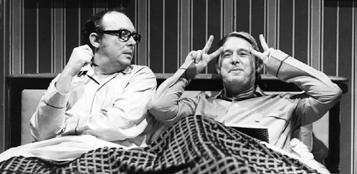

What a pity that neither member of this double act for the new fiscal era was around to learn from the master.
Henry VEric Morecambe and Ernie Wise
Universal darkness will cover the earth, relieved only by the nocturnal emissions of the top one percent. Horror and delight will finally be unified in the sublime consummation of Tory Rapture.
From Dead Cats to Drowned Kittens
the shade of the oldest and most spreading oaks’. Now, I have often noticed how much the Tories resemble druids in their weirdness. As I write, spookily enough, they are gathered in Birmingham under the shade of a spreading oak: Burke also speaks about the ‘terrible uncertainty’ of the thing perceived, which would aptly describe their latest concept of growth derived from tax cuts. It is terribly uncertain how handing vast amounts of taxpayer’s money to the rich could ever benefit society as a whole. Instead, there is a tendency for the sublime to fill the mind with ‘delightful horror’ – that’s delight for members of the party, obviously, and horror for everyone else.
Burke had read Milton’s ‘Paradise Lost’ and was convinced that the most effective art form for evoking the sublime was poetry, which is fine if you happen to be an epic poet. For present purposes, I’m afraid a string of mixed metaphors will have to do.
How can one evoke the sublime sociopathology of druidic Toryism then? It is a kind of sky burial of the British body politic. The entirety of the country’s public services will be carried to a summit and fed to the crows, the vultures, the hyenas, the [insert scavengers of your choice], and this will be achieved through a shock to the system, Schumpeter’s gale blowing through Albion, what he would have called ‘creative destruction’. To mix my metaphors even further, it will be golden showers for the rich, trickle down for the rest of us.

We shouldn’t be surprised that this level of economic and social nihilism is so often misinterpreted, by decent commentators, as stupid – as if it were a case of “Oops, I crashed the economy!” It’s not stupid, nor is it accidental. One of the dynamic duo’s first acts was to sack Tom Scholar. As the Guardian reported, ‘It is understood that Scholar, who worked closely with David Cameron and Gordon Brown before taking the top Treasury job in 2016, was told he would be going on Tuesday after Kwasi Kwarteng was appointed as Truss’s chancellor. When he took over at the Treasury, he replaced Nicholas Macpherson, who had spent eleven years in the job, under three chancellors. In a tweet, Macpherson called Scholar “the best civil servant of his generation”, adding: “Sacking him makes no sense. His experience would have been invaluable in the coming months as government policy places massive upward pressure on the cost of funding. As Gordon Brown used to say: They’re not thinking” (Guardian, 8 September 2022).
Ha! As Gordon Brown used to say. Who, one wonders, are these old stiffs? The fact is, the duo came in with an oven-ready plan for shock and awe, knowing this was the only way to breach the walls of ‘Treasury orthodoxy’. They brought a readiness to ‘think the unthinkable.’ We have gone from the politics of distraction, so prevalent during the Johnson administration, to policies that are openly, cruelly preferential towards the interests of the Tories’ own class. The pretence that anyone else’s interests matter a damn to them has been dropped. The Tory membership has chosen the red-in-tooth-and-claw approach over robbery by stealth. In short, no more Mr Nice Tory. They have gone from a policy of throwing dead cats on the table, to one of drowning unwanted kittens in a sack.
It’s as well to bear this in mind, since this is the nearest we’re ever likely to see to a British coup. For once that word has some literal basis in fact. Nothing the duo are doing has a scintilla of democratic legitimacy, which is why there is something eerily diminished about them as they sit on the government’s front benches, as if two mere MPs have taken control of the government, with none of the dignity of their office conferred by voters.
It’s worse than just a coup; in its deliberate favouring of the rich over us serfs, and its gleeful preparedness to redistribute upwards, to help people who already own the bulk of the nation’s wealth, it resembles a Norman Reconquest. None of the budget’s unfunded tax cuts existed in the manifesto that brought Johnson’s government to power. The removal of the cap on bankers’ bonuses was a quite gratuitous yah-boo gesture, a fiscal version of “Take that, you varlets!”
Another aspect of this coup mentality has been the choice of fall guys. The attack so far has been on three independent brakes on the powers of the executive: the new monarch, the Office for Budget Responsibility and the Bank of England.
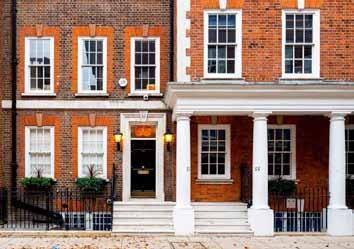
When Kwasi Kwarteng’s minibudget/fiscal event first burst upon an unsuspecting world just over a week ago, the first impulse among aghast commentators was to accuse him of stupidity.Tufton
The BBC reports that Charles has been ‘ordered’ to stay away from the climate conference in Egypt, thus depriving him of his pet project. It is as if Truss had lectured the late Queen on the pointlessness of the Commonwealth. Her snub to the OBR is more serious, however. They are ultimately charged with assessing the budget’s fiscal prudence. One reason the terms ‘mini-budget’ and ‘fiscal event’ were employed was to wriggle out of the need for such scrutiny. And then there has been the shabby treatment of the Bank of England. Again, an independent body, though this did not prevent Truss from opining that it might have its remit changed when she became leader. The central bank has had to step in with quantitative measures to save the pension funds, but also with increased interest rates to stave off inflation. At the same time, the effect of unfunded tax cuts has been to fuel that very inflation, thus putting the Treasury and the Bank at odds.
The overall impression is of an assault on the established order of things, by taking advantage of the independence of three pillars of that establishment, since they are not free to reply. This is why the meeting with the OBR looked so forlorn, lasted a mere forty-five minutes and did not lead to publication of the forecast they had already prepared. This is why the Bank were left to their own devices as the value of the government’s long-dated debts depreciated. And this is why the King was ordered to stay put. What all three instances have in common is the inability of the victims to take issue with the government in public. Taken together, there is an un-British – or what Michael Gove has called ‘un-Conservative’ – miasma hanging over events.
Sir Keir Starmer wrote in the Telegraph: ‘Eroding our tax base just as there are pressures for spending is not just bad economics or childlike delusion –it is a real and present danger to economic health. It is the gambler chasing good money with bad, the smoker puffing away outside the hospital doors. It is unsustainable…’
That image of the smoker carries just the right associations of the unhealthy and dirty habits that people find most difficult to break, such as snobbery, entitlement, money.
The polls show a steep decline in the Conservative Party’s popularity. Truss was right about this much – she isn’t popular. She doesn’t court popularity, of course, she’s so pure in her dogma. In response to that perceived streak of insouciance, there has been no bounce in her ratings to mark her honeymoon. Instead, the country is gearing up for a full-scale class war, personified by the articulate Mick Lynch, General Secretary of the National Union of Rail, Maritime and Transport Workers (RMT), for example, versus the overpaid railway bosses.
Dare one hope that we are hearing the last gasp of Tory hegemony? To employ the tired cliché, the mask has certainly slipped, and all we see now is the unacceptable face of the gig economy, saying she will “deliver, deliver, deliver” like a woman on a scooter. What she intends to deliver is an endless supply of salt to rub in people›s wounds. ‘Trussonomics,’ it turns out, is mind-numbingly crass. It involves what harpies do from a great height, in great quantities, polluting everything, in precisely the way she permitted the water companies to pollute the rivers.
And living next door to this incontinent harpy, we have the worst chancellor the country has ever seen, stepping out of the door of Number Eleven and jigging along the pavement as he goes. This is the moment the Tories were always waiting for, the Tory Rapture. In front of the camera crews and the pundits and
poor old Larry the Cat, his joy unconfined, Kwasi Kwarteng no longer holds back. He breaks into delightfully horrible, sublime poetry (here translated from the original Latin):
“Abandon your scruples, why don’t you? Okay, it’s a bit turbu-lent, But hey, sell your soul, I implore you, ‘Tis only a fiscal event!

Let bonuses rain on the City. Of unfunded tax cuts I sing! Sold to the toff on my right, (My far right!)
‘Cos I’m Kwazy, I’m Kwasi Ker-ching!”

But what the denizens of Tufton Street really want to drop on the heads of the British public is nothing less than the raw ‘id’ of the Tory party.Popular with the public ‘Their droppings are abominable, their faces haggard with insatiable hunger’ Virgil
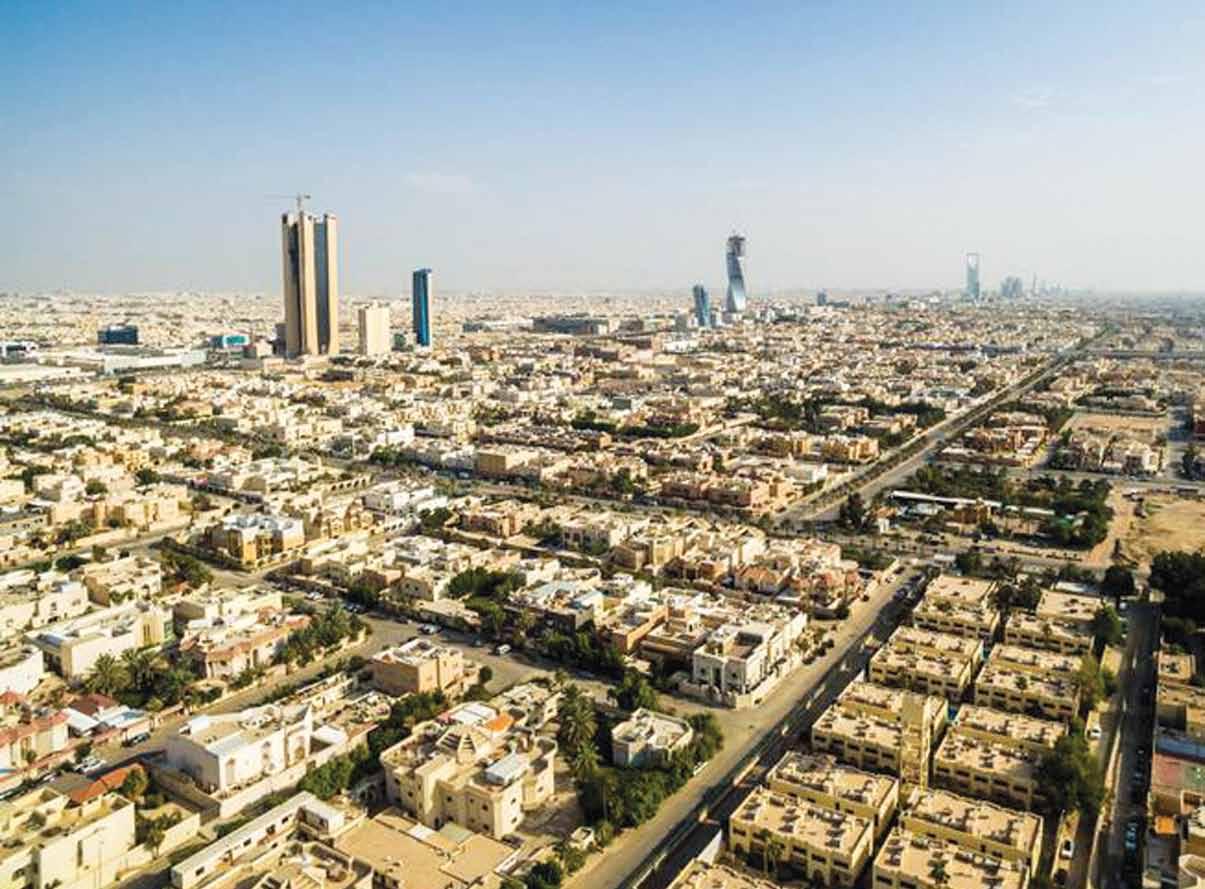 By Motasem Al Felou – Jeddah
By Motasem Al Felou – Jeddah
“Downtown may have originally referred to a place that was lower and hard by the water front — the “down town,” in contrast to the “up
town” further inland and higher in elevation. Manhattan likely inspired the concept. Urban settlement began at the island’s southern tip and over time proceeded northward onto high er ground. Indeed, the topographic basis of the word downtown sets in motion a progression
Saudi Downtown Com pany will develop over 10 million square metres of land across various pro jects. Credit: Bloomberg
to midtown and uptown, and later to suburbs and exurbs. It links the American city’s mor phology and development with movement and improvement, with linear elongation and neighborhood succession.” This quote is taken from placesjournal.org. The story behind look ing for the definition of the word “downtown” is the launch of the Saudi Downtown Com pany (SDC) by the Saudi Public Investment Funds earlier last week.
The first question that came to mind was: What is the meaning of downtown in dictionaries? What is the history of “downs?” The term ap peared between the late 1700s and early 1800s. Brits claim precedence in coining the term.
The next question I asked myself: “How would Saudi Arabia transform 12 downtowns into vi brant places? What is the point of creating a company with an ultimate purpose of upgrad ing downtown? Why is SDC targeting cities in all directions? Some are remote ones!
Most of Saudi Arabia’s cities have two down towns, the old one (usually called al-Balad or the Historical City), and the new downtown, which is known as “city center” or the “busi ness hub.”
Historical downtowns are being taken care of by the Ministry of Culture in different cities, including Jeddah and Taif.

“What we are doing here is the restoration of historical buildings. It is not an easy job to do. We are governed by the use of specific materi als and strict architectural criteria to keep the site as original as can be,” told to Majallah by one of Historical Jeddah’s restoration site su pervisors in a previous visit to the area.
The “new downtown” will be the new concept SDC is bringing to the 12 cities in the King dom. The concept of “new downtown” almost does not exist in the modern Saudi Arabia. The concept of “city center” or “downtown” refers to the busiest business district in any city.
According to the launch press release, SDC aims to build and develop downtown areas and mixed-use destinations in 12 cities throughout Saudi Arabia. The 12 cities include: Al-Mad inah (northwest), Al-Khobar(east), Al-Ahsa (east), Buraidah (northcentral), Najran (south west), Jazan (southeast), Hail(northwest), Al-Baha (western), Arar (north), Taif (west), Dumat Al-Jandal (northwest), and Tabuk (northwest).
“Most of the cities are new to PIF’s local in vestment map. Saudi Arabia sees potential in cities with low investment flow. Creating more opportunities for people in smaller cities will help people stay in their cities, reduce migra tion to major cities, and raise the living stand ards across the different parts of the Kingdom, bridging the development gaps,” said Eng. Amen, a civil engineer in a local private sector company.
The company states that its scope of work in cludes the improvement of “the infrastructure and building strategic partnerships with the private sector and investors, by creating new business and investment opportunities in key economic sectors, including retail, tourism, en tertainment, and housing.
“The startup will be in charge of developing 10
Saudi Arabia is restructuring cities on the way towards modernism while preserving the original identity of the cities. It is the mechanism of updating and upgrading the whole country.
million square meters of land. This area is re ally huge and needs a lot of money. Saudi Ara bia is restructuring cities on the way towards modernism while preserving the original iden tity of the cities. It is the mechanism of up dating and upgrading the whole country. Over the past few months, the government started works on an ambitious megaproject to remove
chaotic areas and slums, paving the way for a city that needs to make its glory shine,” com mented Eng. Amen.
“All Saudi cities will get equal development with major cities. Medium and smaller cities have the potential to grow local community economy,” he added.
SDC says it will create modern destinations drawn from Saudi Arabia’s diverse local cul ture and traditional architectural motifs, while using cutting-edge technology in every project.

After the 1974 Oil Boom, Saudi Arabia cre ated unprecedented wealth. Cities expanded exponentially and the population grew quick ly. Infrastructure took the lion’s share of the spending as a benefit from the wealth. With the dramatic expansion of cities, streets were designed to serve vehicle drivers and new mar kets. The rapid urbanization resulted in new
“What we are doing here is the restoration of historical buildings. It is not an easy job to do. We are governed by the use of specific materials and strict architectural criteria to keep the site as original as can be.”
Downtown Riyadh Saudi Arabia. Image used for illustrative purpose.
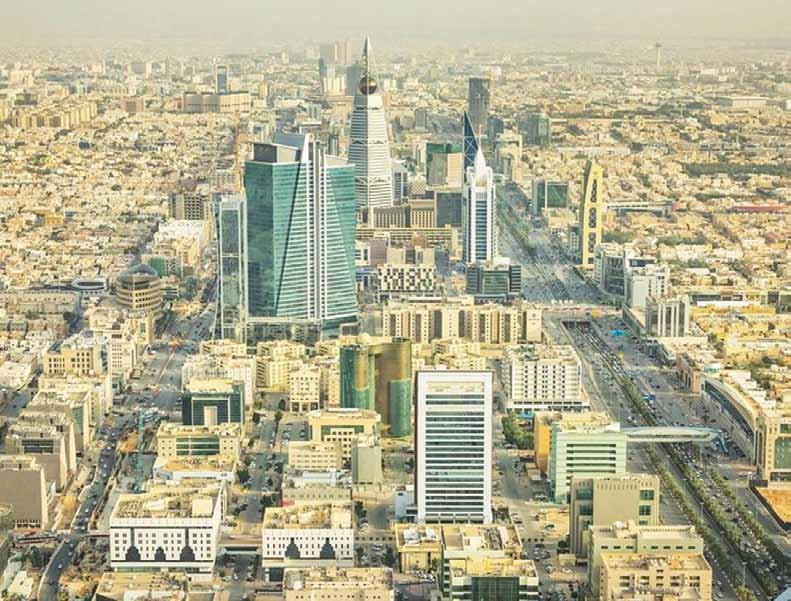
Credit: Getty Images
challenges and obstacles.
SDC is coming now with a different concept of city humanization. Sometimes, it is hard to improve chaotic areas, and that’s why the mu nicipalities across the Kingdom have restored almost all public lands and evacuated and compensated the owners of dormant private areas, enabling the new downtown developers to start from the scratch.
The new downtowns will include green spac es, office buildings, entertainment areas and residential units, with bigger spaces for pedes trians, e-scooter riders and bikers. There will be less use of cars by having all the ameni ties secured for residents. However, the new downtowns need to be tourist attractions for visitors from all over the world. For this ex act point, it’s good to highlight that SDC’s purposes integrated with the Kingdom Vision 2030’s objective of creating destinations that make tourism thrive and prosper while raising the standard of living.
The new downtowns will include green spaces, office buildings, entertainment areas and residential units, with bigger spaces for pedestrians, e-scooter riders and bikers.
Humanizing downtowns turns them into vi brant spaces that make people love their cities and welcome newcomers to share the joy of living. How long does it take to complete the development of 12 Saudi downtowns?
SDC is expected to share design and action plans for its project before construction opera tions are launched. It is the Saudi way of re structuring and transforming lifestyles.


Despite her upbringing in Upper Egypt, in Sohag governorate, which is known for its adherence to customs and traditions, including some restrictions such as preventing girls from traveling, Shaimaa AlNajjar proved a great success in reviving one of the old Egyptian crafts, Al Talli.
“Al-Talli is one of the Egyptian arts of embroidering textiles with threads of gold and silver, and we make it in a village on Shandweili Island, which is the only village in Egypt that still works in Talli clothes.”
Al-Najjar has been working on Talli for 12 years now, and she learned it by chance.
“At first there was objection from my family, but I tried to convince them. When they saw my success they supported me,” she said.
The Upper Egyptian girl, participated in many handicraft fairs, inside and outside Egypt, including the Cairo International Handicraft Fair, youth and sports fairs to revive heritage, and presented her works in exhibitions dedicated to handicrafts in France, India, Bahrain and the UAE.
Shaima Al-Najjar, the most famous designer of Al-Talli fashion, confirms that it is not just the type of fabric that distinguishes her de signs, but rather the heritage of her ancestors that she seeks to revive.
Needle, gold or silver ribbons, black or ivory mesh fabric, this is all the Egyptian Assiut woman needs to decorate veils, shawls and dresses that fascinate the onlookers with motifs that bring the legend back to life.
Some trace the name Talli to the French tulle, which is a lightweight mesh, very soft and hard.
Upper Egypt was known for its Talli embroidery, especially in the area between the governorates of Assiut and Sohag, which are lo cated on the Nile River.
The Assiut Talli has been made in the Assiut region since the late 19th century, although the concept dates back to ancient Egypt.
In the past, Talli was used in making the shawl and the abaya only, but now many clothes are made of Talli, such as soiree dresses, and blouses in various colors, according to Al-Najjar.
Talli was obsolete before it achieved a big comeback as movie stars began to look for, and choose it to wear during international festivals and galas.
As she is very keen to keep Al-Talli industry flourishing, El Najjar is training girls in Upper Egypt, especially the girls of her village and the neighboring villages.
Examples of this art were also found in the tombs of the pharaohs, and in most cases the metallic thread was gold.
Doaa Mohamed Mahmoud Ahmed holds a Bachelor of Applied Arts from the Department of Ready-Made Clothes, and a Diploma in Folk Arts from the Academy of Arts. He compiled a lengthy study enti tled “The Talli Style as a Source for Fashion Design and Mannequin Formation,” in which important information is provided about the origin and history of the Talli, its tools, materials and method of manufacture, its elements and symbols.
During the 19th century and the beginning of the 20th century, the Talli industry remained prosperous, but it later declined sig nificantly, and it was only worn by the popular Egyptian dancers “Al-Ghawazi.”
This made women from conservative families avoid it, so the de mand for it decreased, and no one was able to master or seek to
learn the craft, and therefore it began to gradually disappear until it was on the verge of extinction, according to Ahmed’s study.
Talli work requires simple raw materials, which were made in the past by hand and in a primitive way, from the needles to the gold or silver ribbons, down to the fabric itself.
In the past, the ribbons used in the art of Talli were made of pure gold or pure silver, and were called “Tal,” and due to their high price, they were later replaced by other materials.
The symbols used in Talli are from the Egyptian environ ment, and they have a cultural aspect as some of them are Pharaonic and others are Coptic.
Among the most famous of these symbols are the broken line, which symbolizes the Nile River, and the triangle, which symbolizes the mountains that abound between As siut and Sohag, the home of the art of Talli. There are also the Coptic cross or sickle, the bride, the sun, the candles, the camel, the house, the fields of reeds, and others, which are shapes engraved on the tulle and portray the story of the bride moving from the house of her family to the house of her groom.
All of these shapes are geometric, they come in the form of triangles, squares, rectangles and lines.
Motifs are embroidered on women’s veils, robes, and shawls to negate envy, according to popular beliefs.

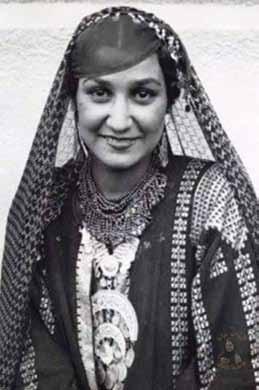

Talli-worked garments were included in the bride’s accou trements, but the rich women also wore them, whether for social or religious occasions.
The motif in the Talli is the smallest single or repeated building unit, and the assortment of motifs are forms of a heritage vocabulary that the girl uses to express her identity, and to document important events related to her life.
After the closure of Aziza Al Shaarani’s workshop in 1965, which was located in Assiut, Al-Talli became threatened with extinction until the plastic artist Saad Zaghloul opened Beit AlTalli in 1994 so that Egypt would not lose one of its distinc tive features, especially since Al-Talli was about to disappear completely.
With the same ideas, details and ancient motifs, this art has been resurrected for use in the present day, without prejudice to its inherited origins, which gather in its unity of the civili zations that have succeeded in Egypt from the Pharaonic era until now.
Beit al-Talli became the only place in Egypt where al-Talli was revived. It is an individual initiative aimed at preserving one of the landmarks of the Egyptian cultural and civilizational her itage and introducing it to all Egyptians, especially the new generation.
These craftsmen have been successful in introducing the world to an art that has almost become extinct for several factors, including people’s lack of interest in it, their preoccupation with civil life, the lack of skilled labor, the high price of raw materials, and the lack of people in the rural areas of Upper Egypt to acquire it as they did in the past due to the changing living situation.
The Assiut Talli has been made in the Assiut region since the late 19th century, although the concept dates back to ancient Egypt.In the past, Talli was used in making the shawl and the abaya only, but now many clothes are made of Talli such as dresses soirees, and blouses in various colors. In the past, Talli was used in making the shawl and the abaya only, but now many clothes are made of Talli such as dresses soirees, and blouses in various colors.

Member of Parliament, lawyer specializing in inter national law, head of household, and former profes sional athlete – it all came together in the chair of the Green Party, Annalena Baerbock.
Baerbock was co-leader of Alliance 90/The Greens with Robert Habeck from 2018 to January 2022.
She was the Greens’ candidate for chancellor in the 2021 federal election, making her the first such can didate for the Greens and, after Angela Merkel, only the second woman to be chosen by a major German political party as its candidate for chancellor.
Following the election, the Greens formed a traffic light coalition led by Olaf Scholz, and Baerbock was sworn in on December 8, 2021, as Germany’s first female foreign minister.
Annalena Baerbock made it clear from the start who the Green Party should elect as its leader in 2018. The German MP from Brandenburg, dressed in a black leather jacket, walked to the podium at the electoral party congress in Hanover and delivered the campaign speech with enthusiasm and equanim ity.
One line from her speech was repeated over and over, as she shouted at the top of her lungs to thunderous applause from her supporters: “We are not electing the woman who stands with Robert [Habeck] today, we are electing a new chancellor!”
In the end, she was elected Green Party leader. Annalena Baerbock was born in Hanover in 1980 to a social pedagogue and an engineer. She was raised on a farm with two sisters and two cousins. She went on a student exchange to Florida when she
was 16 years old.
In the year 2000, she enrolled at the University of Hamburg to study political science and public law. Baerbock studied international law at the London School of Economics and Political Science during the 2004-2005 academic year. She began a disser tation on natural disasters and humanitarian aid at the Free University of Berlin but never finished it because her political career interfered.
Between 2005 and 2008, Baerbock worked as the office manager for Elisabeth Schroedter, then a Green MEP. Baerbock ran unsuccessfully for the Bundestag in 2009, but won in 2013 and has since held her seat. Between 2013 and 2017, she was the Greens’ climate policy spokeswoman, before be coming co-leader of the party with Robert Habeck in 2018.
As a 40-year-old member of the Bundestag, Bae rbock was instrumental in effectively burying the Greens’ decades-old schism between fundamen talists and realists, or Fundis and Realos. She and Habeck were elected as co-leaders despite the fact that both were viewed as centrists, whereas tradi tionally the leadership had been split between the party’s two wings.
In recent years, the Greens have become more cen trist, appealing to voters from previously safe havens for Christian conservative parties. However, climate protection groups have criticized this shift, claiming that there can be no watered-down approach to sav ing the planet. To address such concerns, Baerbock and Habeck attended a “No-Longer-Green-Voters Forum” in 2018.
Baerbock has devoted much of her political energy to international issues, taking a centrist stance on defense and advocating for a stronger common EU
foreign policy.
To the chagrin of some traditional Green voters, the party approved a program last year that described NATO as an “indispensable” component of Euro pean security and supported an expansion of EU defense cooperation.
She has, however, called the alliance’s target of all members spending at least 2% of GDP on defense “not really helpful.”
Baerbock is seen as taking a centrist stance on de fense and advocating for a stronger EU foreign pol icy, particularly against Russia and China. She has proposed a post-pacifist foreign policy, calling for a European army overseen by the European Parlia ment and outlining steps to denuclearize Germany in consultation with its allies. She backs NATO’s eastward expansion and cooperation with the US. Baerbock appears to have taken a pro-Israel stance in response to the 2021 Israel–Palestine crisis. She called the number of UN resolutions criticizing Is rael “absurd” compared to resolutions against other states.
Baerbock has advocated for a transatlantic and Eu ropean Green Deal. She has emphasized the impor tance of technology transfer in order for countries around the world to limit global temperature rise to 1.5 degrees Celsius, as outlined in the Paris Agree ment.
Baerbock has called for the abolition of coal in Ger many by 2030, the implementation of a speed limit of 130 kilometers per hour, and the restriction of car registration to emission-free vehicles “by 2030 at the latest.” According to her, “agricultural subsidies should be oriented toward the common good,” and animal populations and meat production should be “significantly reduced.”
Baerbock has also stated that “climate policy is not in conflict with the economy” and that she wishes to keep Germany as an industrial nation “into the twenty-first century - in light of the Paris climate agreement.”
She supports the production of carbon-neutral steel and has expressed support for climate tariffs, which are international taxes on carbon-intensive goods. Domestic German flights will be rendered “super
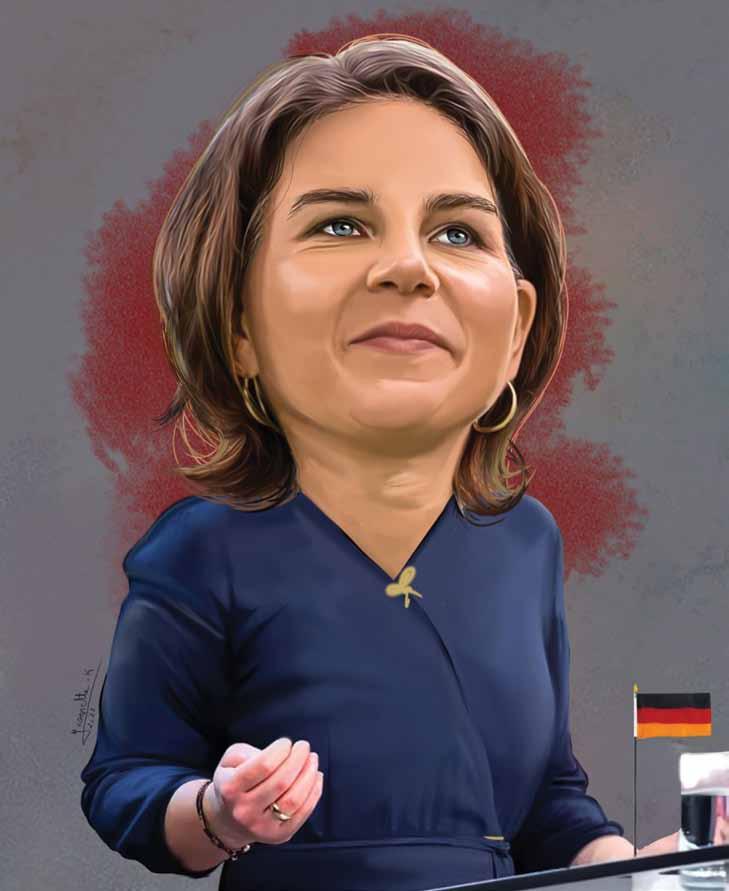
fluous” under her policies by 2035, thanks to in creased rail capacity.
She also advocated for doubling the annual renew able energy expansion quota by the mid-2020s.
According to Baerbock, the cost of environmental destruction caused by climate change is rising.
Away from politics, Baerbock excelled as a trampo linist as a child and adolescent, competing in nation al competitions. She said earlier this year that sports
helped her integrate during her year as an exchange student in the United States.
Since 2007, Baerbock has been married to Daniel Holefleisch, a political consultant and public rela tions manager who has worked as a lobbyist for Deutsche Post DHL Group since 2017.
They have two daughters, both born in 2011. They relocated from Berlin to Potsdam’s Nauener Vor stadt district in Brandenburg in 2013.
Last month, the popular Netflix TV network broadcasted a first of its kind – a Muslim Pal estinian American presenting his life story to a world-wide audience of about 225 million who subscribe to this California-based pro duction company with $30 billion annual rev enue and 12,000 employees.

The series was applauded for being one of the first major American television shows to por
tray a Palestinian-American refugee as the pro tagonist. Review-aggregator Rotten Tomatoes gave it a 100% rating for being “frequently hilarious while possessing an absorbing sense of place, Mo is a thoughtful depiction of the immigrant experience that is light on its feet.”
Mohammed Amer (41-year-old) was born in Kuwait to Palestinian parents who sought refuge there from Israel’s occupation of their land, and later sought refuge again in the US when Iraqi President Saddam Hussein invaded
Comedian Mo Amer, who filmed his new Netflix show, “Mo,” in his adopted hometown. Credit: Netflix
Kuwait in 1990.
Amer, who rose to fame as a comedian, joked about “Three Hells”: Israeli’s occupation, Iraq’s occupation of Kuwait, and, to a lesser degree, the US bureaucracy that “tortured” him for years when he applied to be an Ameri can citizen.

His jokes about the US immigration bureau cracy are endless, particularly when he was a standup comedian before the “Mo Najjar” se ries on Netflix. His comedy routines not only made fun of himself as a naïve immigrant, but also targeted the immigration and naturaliza tion department, which has been known as probably the most complex – and ineffective – federal government agency.
As in this joke: “I had [before becoming an American citizen] what’s called a refugee travel document. Inside, in huge letters, it says: ‘This is not a US passport.’ An immigra tion officer once looked at it, took it away for 20 minutes, came back and informed me that it was not a US passport.”
Although trying not to dwell on politics, he couldn’t escape it during about 20 years of be ing a comedian in view of the reality of US politics and culture, particularly for being a Palestinian and a Muslim, and especially after the 9/11 attacks on the US in 2001.
In a recent interview with the Washington Post he remembered those days: “Things start ed to go very wrong. It wasn’t that I didn’t get bookings – a lot of people thought I was Mexican anyway – but emotionally I was hav ing a tough time. It was hard for me to hear how Arabs were being talked about.”
Then, there was the name of Osama bin Lad en: “In a Walmart, I lost Osama, my young nephew, and stated running from aisle to aisle looking for him, but, I couldn’t at all shout his name,” then the punchline, “Do you know how many people in Walmart were carrying guns?” Amer talked about grappling with the issue
of combining his ethnicity with his comedy. “The whole pigeonholing thing about being Muslim and funny ... I try to avoid it, I’d rath er just be a comic who is also Muslim.”
Despite not wanting to be boxed in, he some times refers to his religion. In YouTube vid eos, he tested Americans on the street about their knowledge of Islam. Some people thought that the Islamic fasting month was called “jihad” or “February.” However, Amer is adamant that his ethnicity should not curtail his comedy: “I definitely don’t feel restricted, I really feel no boundaries.”
Most of the time, Amer avoided politics as he found rich sources in other fields. At first, he focused on the most universal topic of all –teenage life. He found himself doing standup jokes to American troops in Japan, Korea and Guam as well. The irony was that he found American soldiers “the best audience. We for get that soldiers are among the most well-trav elled people in the world. They understand the references I make.”
They, and many other Americans, surely un derstand “falafel” “pita” and ‘hummus.” And that was why Amer suggested to Netflix to locate his show, “Mo,” in Houston, and to have “Mo” enjoying pita and olive oil with friends while sitting inside a Middle Eastern cafe smoking a hookah. As an employee in a grocery store, he offers women bites of pita bread with “my mother’s olive oil.”
In subtle ways, Middle East food became his “weapon.” It is an Arab custom of offering food, and, in times of crisis, eating to lessen
Mohammed Amer (-41yearold) was born in Kuwait to Palestinian parents who sought refuge there from Israel’s occupation of their land.
the effect of the crisis. In the morning, “Mo’ woke up to his mother’s large plate of hum mus and pita next to his bed. Now, his girl friend of Mexican origin moved from baking tortillas to baking pita bread, and from mak ing refried beans to making hummus.
Once he shouted obscene words in a grocery store when he saw hummus with chocolate, and also when he saw a hamburger inside a pita bread. In Houston restaurants, he carried
his mother’s homemade olive oil in a small bottle in his pocket and on weekends took the family to an olive farm, to feel connected to Palestine, if for no other reason.
The show follows fictional “Mo Najjar” as he and his family navigate the exhausting adap tation to American life – also the fruits of its diversity.

He speaks Arabic at home, Spanish with his Mexican American girlfriend and English to his audience.
He found that creating “Mo” was a therapeu tic procedure as it mostly followed his life events. “I was very excited to pick it apart and figure out what we wanted to fictionalize to push this story forward,” he said.
But, after almost 30 years in America, he still wonders: “When is the world going to be ready for me? When am I, as a Palestinian, going to be allowed to have a show that has this kind of narrative?”
He answered: “You will never know, but you better be prepared.”
“Things started to go very wrong. It wasn’t that I didn’t get bookings – a lot of people thought I was Mexican anyway – but emotionally I was having a tough time.”
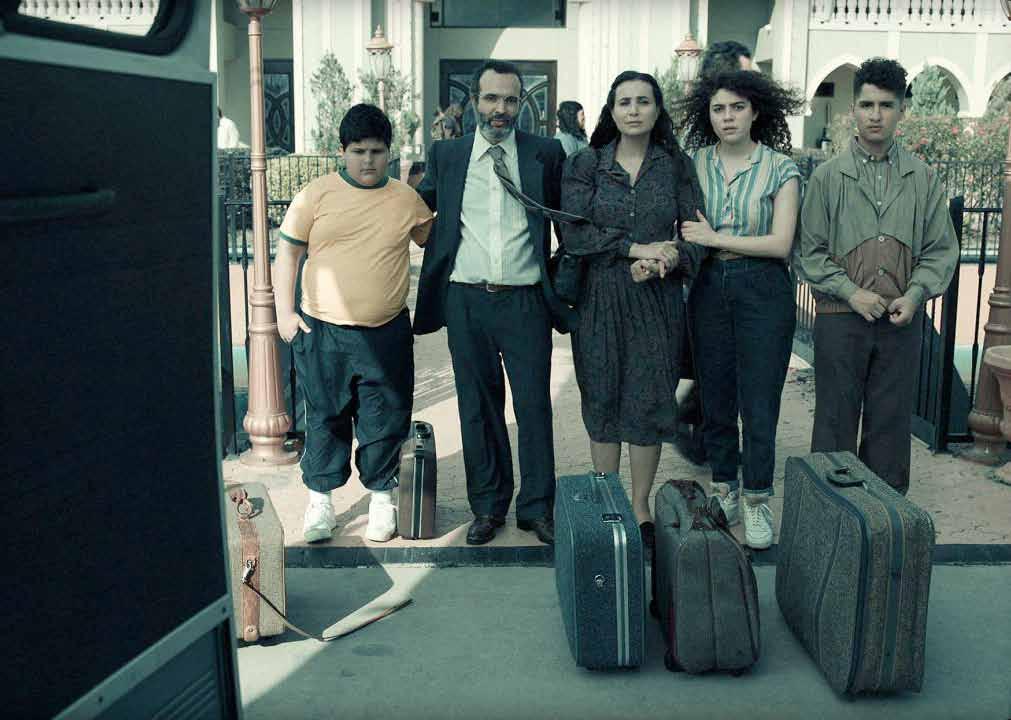

A new TV series called Bullitt will begin filming in the third month of next year. The title is familiar be cause it was inspired by the 1968 film directed by the brilliant Briton Pe ter Yates and starring the late Steve McQueen (the King of Cool among other actors).
This new film and series will be shot in San Francisco, which the camera loves, especially if the film depicts suspense, police, and chases. The original Bullitt was one of the best police action films, and it remains so more than 30 years later.
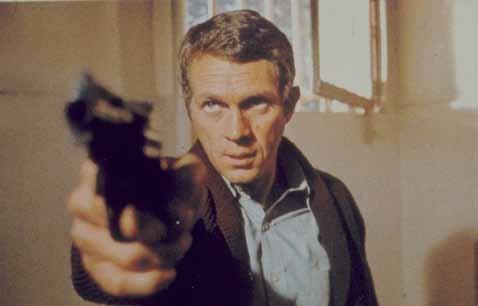
In that film, McQueen (the actor, not the current director by the same name) plays Detective Bullitt, who is neither corruptible nor affected by any threat. He is entrusted with the task of protecting an eyewitness who was hiding from the Chicago mafia.
The assignment is not completed as required insofar as two killers (Paul King and Paul Hickman) infiltrate the witness’ room in a dilapidated hotel and shoot him as well as the detective whom Bullitt had appointed to guard the witness.
This infuriates Attorney General
Robert Won, who wanted to keep the witness alive until he was brought to court, in order to score an electoral victory.
The Attorney General seeks political gain, whereas Detective Bullitt wants to serve the law first and foremost.
After Detective Bullitt successfully spreads rumors that the witness is still alive, the two killers hired by a Chicago gang make a second attempt to kill him.
The film’s introduction to high ten sion is achieved through unforgettable chase scenes between McQueen (who drove the chase car himself) and the killers’ car.
There are three chases in the film: the first one is in a hospital (the viewers’ hearts almost get stopped) and a sec ond one is over city roads that were built on mountains and hills that allow
cars to literally fly (the heartbeat of viewers does stop there). Then there’s the third, in which Bullitt and his as sistant are looking for another killer who is the real wanted witness. This chase takes place at Los Angeles Air port: in its hall, on the airport grounds, and also on the plane carrying the wit ness.
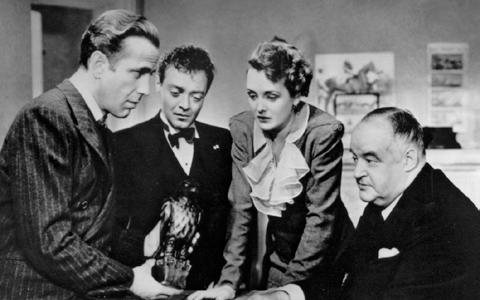
Because the city (for the most part) is built on hills, the streets in the city’s center are mountain roads that ascend and descend. The street ascends for fifty or a hundred meters, then de scends for a similar distance, and then ascends and descends again. Depend ing on whether you’re going up or down the road, the top of each hill is higher or lower than the previous one. As a member of the new British cin ema community of the 1960s, Peter Yates uses his documentary style in a manhunt that begins in town and ends with the murders of criminals fleeing the dark green Ford Mustang driven (madly) by Steve McQueen. However, before this ending, the two cars jump with their wheels over the top of each hill at a clear height be fore landing on the ground and scurry ing towards the next hill. The car was really flying at the time, not against
a green screen background or using CGI.
These are scenes that this critic did not forget when he arrived in San Fran cisco for the first time and took a taxi from one of the hills (on the first day of his arrival) to try this road and re capture all the excitement that accom panied the chase when he watched the film four times within three days at the Capitol cinema in Beirut (and count less times after that).
The slopes were so steep that I worried
the taxi would flip over as it descended from the top of the mountain toward the city’s north coast, where the film festival, hotel and a nearby Palestinian falafel restaurant were located.
This is San Francisco. A city of ex ceptional beauty. California’s historic town. Its airport is directly next to the sea, and a plane will have to finish its landing shortly after its wheels touch down on the runway due to the short distance.
Bullitt was not the only film shot there, taking advantage of its architectural capabilities and unique nature. The city was a suitable setting for thriller movies, and few romantic films, such as Woody Allen’s two films, Play it Again Sam (by Herbert Ross, 1972) and Blue Jasmin (which Allen only directed, 2013).
Hal Ashby chose it as the setting for his drama, Harold and Maud, 1971, as did Chris Columbus when he filmed his comedy Mrs. Doubtfire (1993). Gus Van Sant, on the other hand, di rected Milk, a film about former New York City Mayor Harvey Milk, in 2008.

These are just some types of the movies that were filmed there. Most of them (except for Milk) could have been re located to other cities. However, the detective genre had to take place in San Francisco because the films were based on stories that either required a specific atmosphere, or the city’s dis tinct architecture, or they were based on real events that took place in the city. A number of thriller and detec tive film franchises have made good use of the city’s exciting aspects and unique features.
In the 1940s, John Huston directed The Maltese Falcon, starring Hum phrey Bogart as detective Sam Spade, based on the novel by Dashiell Ham mett. Despite the fact that Hammett lived in San Francisco and told a story that took place there, Huston chose to use the city only in the opening scene of the 1941 film.
Five years later, Humphrey Bogart re
turned to San Francisco to star in Dark Passage, by another writer of crime fic tion, David Goodis. The film, directed by skillful Delmer Daves, makes good use of the city in the first ten minutes. He narrates the story from the hero’s point of view only, until Bogie’s wife and co-star Lauren Bacall appears in the film.
A year later, Orson Welles filmed The Lady from Shanghai in San Fran cisco’s Chinatown. It was directed by and starring Welles, and co-starred Rita Hayworth who later described the film as “amazing,” despite the fact, as she added, “But I did not understand what the movie was about very well.” Many critics and viewers had the same view.
The 1950s began with Rudolph Ma té’s film D.O.A. (Dead on Arrival). It is a film noir starring Edmond O’Brien as Fred, who walks towards a police
station and declares that he will die within 24 hours after he drank from a poisoned glass.
The same film was remade in color in 1988, but the black and white ver sion remains the best and most im portant. There were many films in the 1950s, but the best of them (and the one that crowned all mystery and thriller movies) was Alfred Hitch cock’s Vertigo (1958).
Kim Novak manipulates James Stewart by claiming her murder and then reappears to him. He thinks she’s another woman that only re sembles his love, so he falls in love with her before realizing they’re the same person. We see the city, or at least part of it, at the beginning of the film. Between life and death, Detec
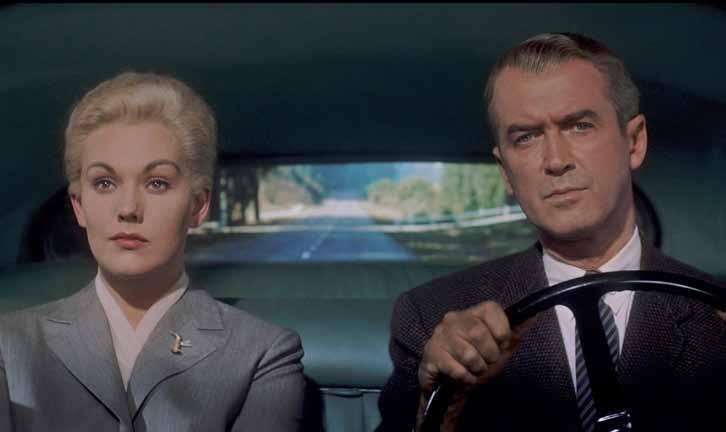
tive James Stewart slides off a roof top, clinging to the ledge as cars pass beneath him. An incredible start to a film that never ceases to amaze.
Of course, the sixties are the dec ade in which British director Peter Yates made his wonderful film Bul litt, as previously mentioned. This film laid the groundwork for chase films, including William Friedkin’s French Connection (1971), which took place (and featured chases) in the flat city of Chicago. It was pro duced by Philip D’Antoni, who also produced Bullitt, and later produced The Seven-Ups. This was another detective fiction which he directed and filmed in New York in 1973. He could’t achieve what he did in Bullitt in either of these two films. The sixties also saw the release of Irishman John Boorman’s film Point Blank (1967). The story is about Lee Marvin’s revenge on his adversary,
John Vernon, with both vying for a woman (Angie Dickinson) and for tens of thousands of dollars (Mar vin’s share) that was stolen by Ver non.
In the early 1970s, Clint Eastwood starred in Don Siegal’s Dirty Harry (1971), which had to take place in San Francisco, as it was inspired by a real detective who was well played by Eastwood.
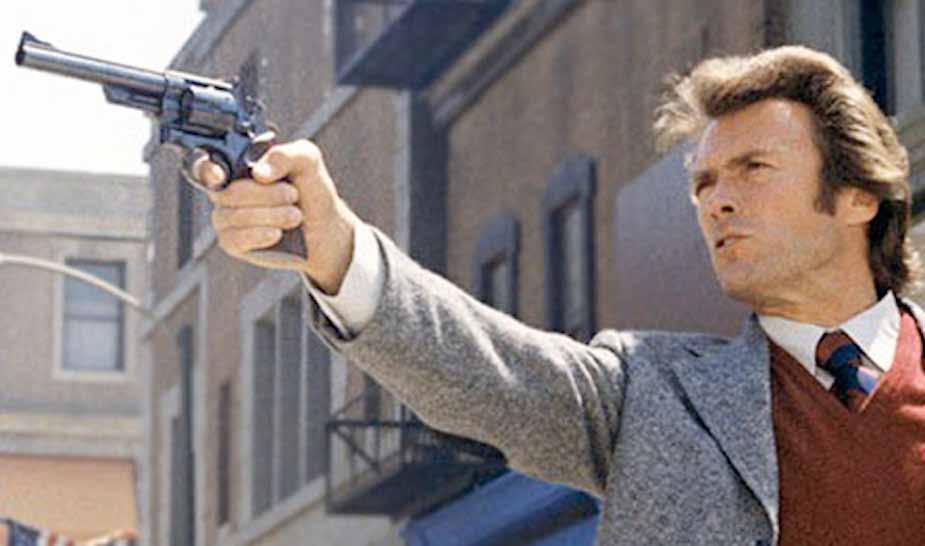
Eastwood and Siegal returned to the city at the end of the 1970s to shoot Escape from Alcatraz (1979). Alc atraz, a nearby island that has been converted into a prison, is surround ed by water and sharks and was the setting for numerous prison films dating back to the 1930s and 1940s. It also played a minor role in John Boorman’s film Point Blank.
In the mid-1970s, the brilliant direc tor Francis Ford Coppola made his
film The Conversation (1974) and chose the city as a place to live after wards. He also has vineyards outside San Francisco, which he uses for an other “business” of producing wine. In San Francisco, David Fincher made two films, The Social Network in 2010 and Zodiac four years ear lier.
Many other films have been shot in San Francisco, taking advantage of the city’s natural, breathtaking landscape. Many of them crossed my mind in 1984 and on two subse quent visits to the city, during which I decided to stay in the same mod est hotel (at least in appearance) and to visit the same falafel seller mid way between Lombard Street and the city’s coast from which I saw the Golden Gate Bridge, which was the setting of other films, the best of which was Vertigo, of course.
Raymond Chandler›s novels are considered to be among the most important private detective stories ever written. His novels, including The Big Sleep, The Blue Dahlia, and Farewell, My Lovely (all of which have been adapted numer ous times), are filled with plot, suspense, a well-executed private detective Philip Marlowe, his problems and cases, and the intricate lines of the stories them selves. None of these characteristics can be found in this new film, which marks the return of Irishman Neil Jordan to the big screen after a long absence (Greta, 2018, was his last film).
The shooting was relocated from Los Angeles to Madrid, which does not have the same atmosphere, even though the film portrays the events as taking place in Los Angeles. Liam Neeson›s acting is traditional here, but that›s not a problem when the plot is simple and the treatment is uninteresting.
The story of a woman who hires a private detective to find her boyfriend, and this key is the catalyst for the events that follow.
◆ Final Note: The best actor to play Detective Phillip Marlowe in 1975 was Robert Mitchum in Farewell, My Lovely.
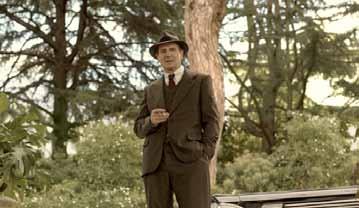
◆ Directed by Parker Finn
◆ Genre: Horror [US]

The movie invites you to smile through its main character, Sosie Bacon. As you face evil, have nightmares, or transition from the present to a ghostly, deadly, and bloody time, remember to smile. In The Shining, Jack Nicholson grinned as he stuck his face through a hole in the door to tell his terrified wife, «I›m home,» and the smile is the basis for The Joker. When Richard Woodmark pushes the crippled woman down the stairs, killing her (in Kiss of Death), he lets out the
giggle that brought about his fame.
The movie›s heroine, who experiences frightening occurrences after meeting a mysterious patient in her private clinic, draws the desired smile. This is Parker Finn›s first film. He has a knack for mastering terrifying scenes, some of which are nearly unbeatable.
◆
Final Note: This film was originally intended to be shown on television, but after a demo with genre fans, it was decided to screen it primarily in theatres.
Directed by Mahmoud Kamel
Genre: Comedy (Egypt)

Leading roles: Hamdy Al Merghany, Amr Abdul Gelil, Amr Al Qadi, Farah Youssef
The protagonists of The Fourth Man are a producer and a director. The first wish es to recover exponentially the costs of any film he finances, while the second
wishes to produce a film that deviates from the usual mix to earn high revenues. But the director will be unable to do so because he is not the producer, and is so much in need of funds that he will make concessions amid squabbles and anec dotes that were intended to be funny.
Although the film actually revolves around the sagging and slack Egyptian cin ema industry of recent decades and it is participating in the same trend it criti cizes. Although it has a serious topic, it employs a comic treatment to achieve the desired commercial success.
◆ Final Note: The film›s previous title was Commercial Film before it was changed to the current title.
◆ Directed by David O›Russell
◆ Genre: Police Comedy (Netherlands)
◆ Leading Roles: Christian Bale, Margot Robbie, John David Washington
Joe (Stallone) will use his reappearance to rid the neighborhood of the gang that harms and threatens people, including Sam, a thirteen-year-old boy who finds that a neighbor of the family (Joe) is a national hero who has been missing for more than two decades. Heroes, at least in films, do not die. Only when the boy and his mother are in danger does Joe (Stallone) respond to the quest to reclaim his heroic glory.
◆ Final Note: Sylvester Stallone is currently working on two projects: The Expendables 4 (which he also directs) and Guardians of the Galaxy Vol.3.
WHITE NOISE ★★
◆
Directed by Noah Baumbach
◆ Genre: Comedy [US]
◆ Leading roles: Adam Driver, Greta Gerwig

After World War I, two American friends (Christian Bale and John David Wash ington) get into a fight and are injured. Margot Robbie plays the role of a nurse who cares for the two men. This happens in the prologue and continues for 20 minutes into the film. Then, they all find themselves accused of a murder and must unravel a mystery before it is too late.
Director Russell aims to draw a comparison between the past and the present: how we live in problems that are not new, but are rather caused by concepts that have had an impact on human behavior since early times. However, despite its many upsides, the film is so dense with overtones and dimensions that it leaves the viewer perplexed as to what they actually mean. Within its serious detective context, the film offers a semi-comic perspective. Christian Bale is the film›s most notable actor, while John David Washington maintains a poker face throughout despite the importance of his role.
◆
Final Note: This is Christian Bale and Margot Robbie›s second collaboration following The Big Short in 2015, and the third film between Bale and director David O Russell following The Fighter in 2010 and American Hustle in 2013.
◆
Directed by John Averly
◆ Genre: Drama [US]
White Noise, which premiered at the opening of the most recent Venice Film Festival, is on its way to its final destination on the digital streaming platform, Netflix. All of these glowing reviews, which gave it undeservedly high marks, will fade away, even if some expect this film to resurface during Oscar season. It is the story of a family led by a Hitler history researcher, while its members are obsessed with the fear of any accident that could lead to death. An accident involving a truck loaded with pollutants prompts them to flee the house. There is a desire to turn the story, which is based on Don DeLillo›s well-known novel, into a satirical comedy. The main elements are present, but they required a director who knows how to use them.
Baumbach seems undecided about whether he wants to delve into the text in search of a serious social topic or he wants to entertain his viewers with comic anecdotes. The only constant factor is that he fails in both.


◆
Final Note: The film was planned for production more than 15 years ago, with Barry Sonnenfeld as a director.
◆
Leading roles: Javon Wanna Walton, Dascha Polaco, Sylvester Stallone Sylvester Stallone is a good fit for the role because he was an actual movie star more than two decades ago. The difference is that he makes his presence felt again just as his character does in this film.
Weak
|
A
In collaboration with FIFA, the Committee for Delivery and Legacy, the body in charge of managing the Qatar World Cup projects, chose eight stadiums to host the 2022 FIFA World Cup between November 20 and December 18, including seven specially built for this event that oc curs every four years.
Only one of these stadiums, the Khalifa International, was fully refurbished to FIFA standards and reopened in May 2017 with the holding of the Emir Cup final, in which Al Sadd defeated Al Rayyan 2-1. The largest is Lusail Icon ic Stadium, which was officially opened with a friendly match between Al Hilal Saudi Arabia and Zamalek of Egypt.
Here are the eight stadiums that will host the 64 matches in the Middle East’s first World Cup:
The interplay of light and shadow that characterizes tra ditional Arab fanar lantern, inspired the design of Lusail Iconic Stadium. Its structure and facade also reflect the intricate inscriptions found on food bowls and utensils, as well as other works of art found throughout the Arab and Islamic world during the region’s rise to civilization.
Among the eight venues, Lusail Iconic Stadium, located 16 kilometers north of Doha, has the largest capacity (80,000). It will also be the busiest stadium, hosting 10 matches in total, including the final and closing ceremo nies.
The roof is an important feature of the stadium, which was designed by Foster + Partners. While it provides just the right amount of light to nourish that all-important pitch while reducing the demand on air conditioning, it is also intended to work in tandem with the stadium’s curved
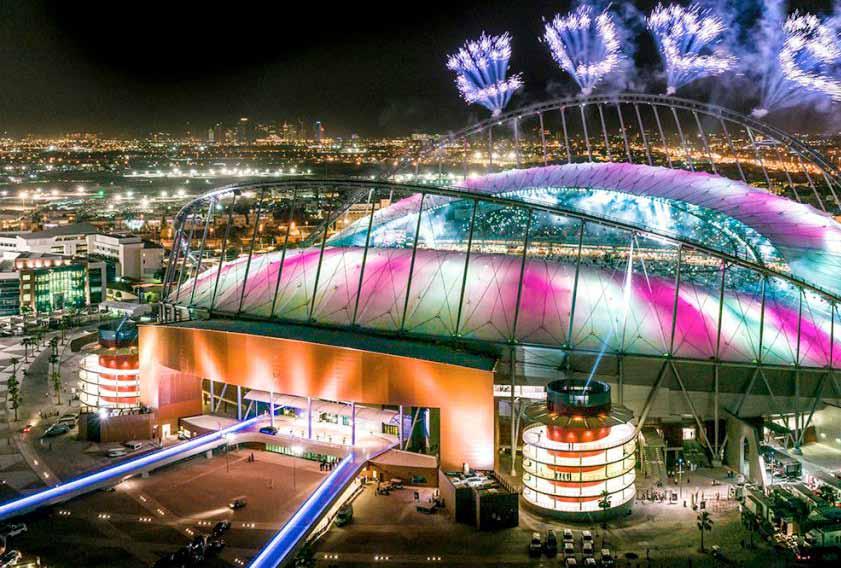
sides to reverberate fans’ cheers and help with the atmos phere during games.
Furthermore, because of the emphasis on sustainability during the design process, such as the use of recycled wa ter to irrigate plants and leak detection systems, the venue conserves 40 percent more freshwater than conventional stadiums.
After the World Cup, the stadium will be transformed into a vital center that will benefit residents of the modern city of Lusail by providing schools, shops, cafes, sports facilities, and health clinics.
The design of Al Bayt Stadium was inspired by bayt al sha’ar tents inhabited by the peoples of Qatar’s deserts and the Gulf region throughout history, who lived as nomads in the Qatari desert in search of pasture and water.
Al Bayt Stadium, located in the northern city of Al Khor, just 35 kilometers north of Doha, will be the welcoming face for fans and players when Qatar takes on Ecuador on Sunday, November 20, and the Germany-Spain match in the group stage, all the way through to the semi-finals.
The seats in the upper section of the stands are designed to be disassembled after the World Cup.
FIFA President Gianni Infantino stated of the stadium dur ing his October 2020 visit; “Al Bayt Stadium is fantastic: it’s a true football stadium. It has a genuine football feel to it as well as a local flavor.”
“The tented shape makes it truly one-of-a-kind, and the Arabic patterns in the roof are simply stunning. I can’t say anything,” he added.
The stadium was first put to the test in November 2021, when it hosted the first match of the FIFA Arab Cup, which pitted Qatar against Bahrain.
A shopping center, food court, gym, and multipurpose hall, as well as running, cycling, and horseback riding tracks, parks, and play areas, will be built within the stadium after the World Cup.
The readiness of Ahmed Bin Ali Stadium (Al Rayyan), which is located in one of Qatar’s most traditional cities, was announced during the hosting of the Amir Cup Final on December 18, 2020, which coincided with National Day.
The stunning stadium, designed by Danish firm Ramboll, features desert-themed design elements. The design was unveiled in April 2015 at a special ceremony at Ali bin Abdullah Fort, and its most striking feature is its glowing façade.
The 40,000 seat stadium was built on the outskirts of the desert, 20 kilometers west of central Doha, on the site of a stadium of the same name. Its undulating exterior is adorned with Qatari cultural symbols. The stadium’s sur roundings, which take the shape of sand dunes, reflect Qa tar’s natural beauty.
“One of the key features of the final design is the five deco rative patterns and shapes that are found within the stadium façade and around the precinct,” Ramboll project director Alan Tweedie previously said of the design.

This FIFA World Cup Qatar 2022 stadium will host seven matches during the tournament, up until the round of 16.
After Qatar 2022, the stadium’s capacity will be reduced to 20,000 fans, and Al Rayyan Sports Club will be based there.
Al Janoub Stadium is located in one of Qatar’s oldest neighborhoods. It is located in the southern city of AlWakra, 23 kilometers from Doha’s center, and has a capac ity of 40,000 spectators. This number will be reduced to 20,000 after Qatar 2022, and the stadium will be home to Al Wakrah Sports Club.
It was designed by the late Iraqi architect Zaha Hadid and was inspired by traditional boat sails, to preserve the herit age of Al-Wakra, an ancient coastal city known throughout history as a center for fishing and pearl hunting.
The sails of traditional dhow boats are meant to resemble the sails of Al Wakrah’s seafaring past. It also employs an innovative cooling system, with under-seat ventilators keeping spectator areas at a cool 18 degrees Celsius. The roof of the stadium can also retract, providing much needed shade during matches held in the hotter months.
Al Janoub Stadium will host seven matches during the tour nament, up to the round of 16.
Cycling and running tracks, a multipurpose indoor arena, pedestrian-friendly outdoor spaces, and a new school will be among the sporting amenities. A mosque, wedding hall, and market will also be built to promote local business and community, as well as tourism.
It depicts a chapter in the rich history of Islamic architec ture, the triangles form complex, diamond-esque geometri cal patterns on the façade, which appear to change color as sunlight falls on them at different angles throughout the
“The 2022 FIFA World Cup will be held in Qatar in eight stadiums, seven of which were built specifically for the event, in addition to the renovated Khalifa International Stadium, the largest of which is Lusail Iconic Stadium”The refurbished Khalifa International Stadium (Photo Credit: Qatar SC)
day. The façade puts on a colorful light show at night. The stadium’s sides reach up and envelop the pitch, keep ing the arena cool thanks to an advanced cooling system. Other unique elements near the stadium include murals installed on the outside which were created by aspiring local artists and capture the spirit of football.
The stadium is 12 kilometers from the city center and is located in the heart of the Qatar Foundation for Education, Science, and Community Development. Its completion was announced in June 2020.
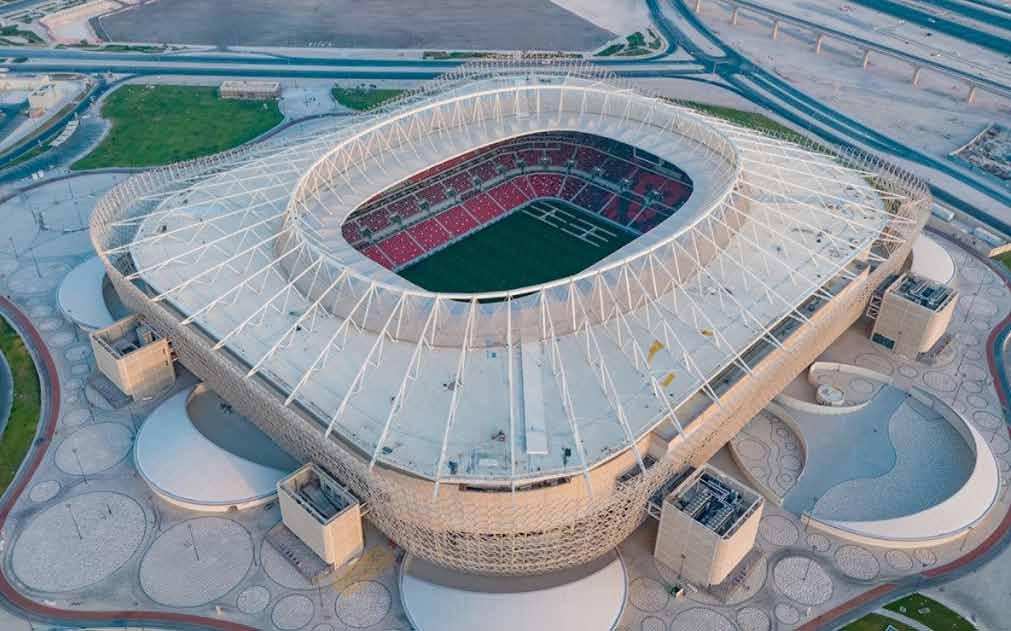
Half of the stadium’s seats will be donated after 2022 to help build sporting venues in developing countries.
The Education City Stadium, which can hold 40,000 peo ple, is expected to house non-governmental organizations dedicated to using sport as a development tool. The sta dium will also serve as a sports, recreation, and social hub for students and the surrounding communities. In addition,
a new school will be built near the venue.
Al Thumama Stadium’s dynamic and impressive design honors Qatar’s and Arab culture as much as it honors a new era of design. Al Thumama Stadium is designed to look like a gahfiya, a traditional woven cap worn through out the region. The stadium is also very important, and it holds a special place in the hearts of the community that is felt throughout the region.
Al Thumama Stadium is the first World Cup stadium entirely designed by Qatari Arabs. The stadium was de signed by the Arab Engineering Office, Qatar’s oldest ar chitectural firm. The team was led by renowned Qatari architect Ibrahim Al-Jaida, who also designed the new Ministry of Interior building in Qatar, the Doha Fire Sta tion headquarters, and the former Qatar Foundation Ad ministration building, which is now printed on the 100 Qatari riyal note.
Al Thumama Stadium will also be outfitted with innova tive cooling technology developed in Qatar to allow play ers and fans to enjoy matches in an ideal atmosphere all year without affecting player performance or fan experi ence inside the stadium.
The number of stadium seats will be reduced to 20,000 post-2022, and the State of Qatar will donate additional seats to countries around the world that lack sports infra structure, while the space of the upper stands will be used to build a 60 room hotel overlooking the stadium, along with a set of facilities that will be agreed upon with the people of Al-Thumama to ensure that their needs are met after the final whistle of World Cup 2022.
“The design of Al Bayt Stadium was inspired by bayt al sha’ar tents inhabited by the peoples of Qatar’s deserts and the Gulf region throughout history, who lived as nomads in the Qatari desert in search of pasture and water”The facade of the Ahmad Bin Ali Stadium is decorated with flora and fauna patterns (Photo Credit: Qatar SC)
Al Janoub Stadium has been designed in the form of a boat (Photo Credit: Qatar SC)
The Khalifa International Stadium was the first stadium to open after being modified and redesigned to meet FIFA’s international standards in preparation for the 2022 World Cup in Qatar. This is due to the fact that it was previously one of the small stadiums that hosted local matches as well as some international matches with small capacities.
Originally built in 1976, Khalifa International Stadium is located in Doha, one of the most beautiful Gulf cities with a rich heritage and uniqueness that attracts a large number of visitors throughout the year, whether for tourism and entertainment or for business and trade.
After the number of seats was doubled, the grass stadium can now accommodate approximately 40,000 spectators.
The stadium was also outfitted with cooling techniques that allow it to be used throughout the year without being af fected by severe Qatari weather factors like high heat and humidity, as well as wind and desert weather.
The stadium, located 13 kilometers from Doha’s center, has hosted numerous events, including the 2006 Asian Games, the 2011 Asian Cup, the 2019 World Championships in Ath letics, the 24th Gulf Cup, and the 2019 Club World Cup.
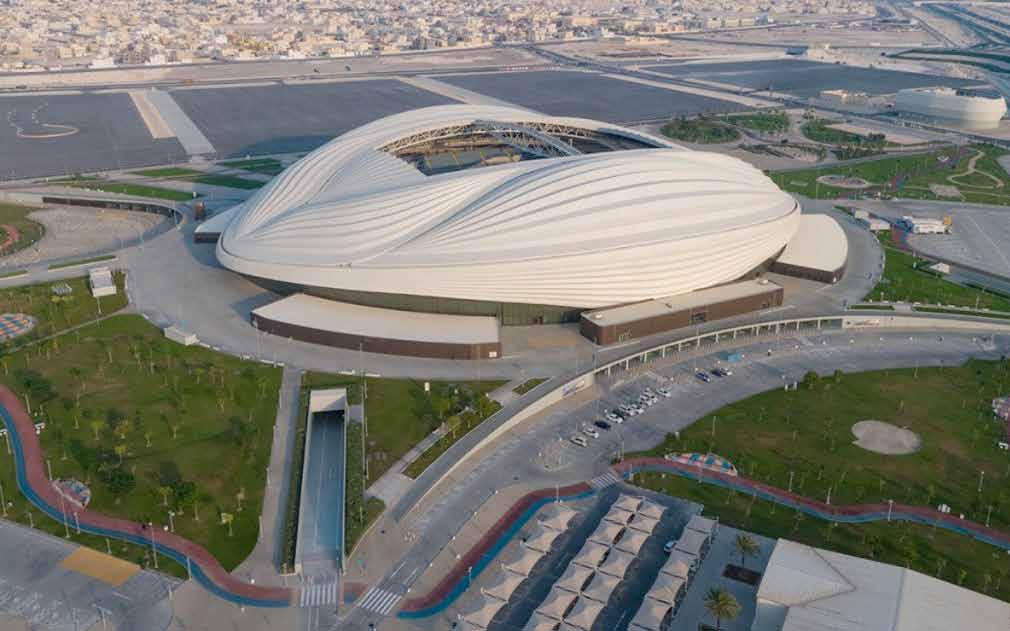
Its roof is topped by two arches that represent continuity and is linked to the 3-2-1 Qatar Olympic and Sports Mu seum by a short pedestrian walkway.
Aside from the Aspetar sports medicine hospital, the Aspire Dome (the world’s largest indoor multipurpose sports hall), the Hamad Aquatic Centre, Aspire Park, and specialist women’s sports centers, there will also be a cutting edge training and education center dedicated to developing world class athletes.
Stadium 974 Stadium 974 (formerly Ras Abu Aboud Stadium) is a stun
ning, ultra-modern stadium located on Doha’s glittering waterfront Central Business District on the east coast. This innovative and pioneering 40,000-seat stadium, designed by world-renowned architecture firm Fen wick Iribarren Architects, is made of recycled shipping containers and modular steel elements that represent Qatar’s rich maritime heritage. Each container is a dif ferent color, making the stadium a truly appealing des tination.
Many parts of the arena, including benches, containers, and even the roof, will be reused after the tournament. The sta dium will also make way for a stunning waterfront devel opment for everyone to enjoy.
It can hold 40,000 people and overlooks the Doha Corniche and the skyscrapers in the West Bay area. The stadium is 800 meters from a metro station. It will host seven matches until the round of 16 and is located near Hamad Interna tional Airport, 10 kilometers east of downtown Doha. In addition, it is the only World Cup stadium without cooling technology among the eight.
“ Al Thumama Stadium is the first World Cup stadium entirely designed by Qatari Arabs. The stadium was designed by the Arab Engineering Office, Qatar’s oldest architectural firm”
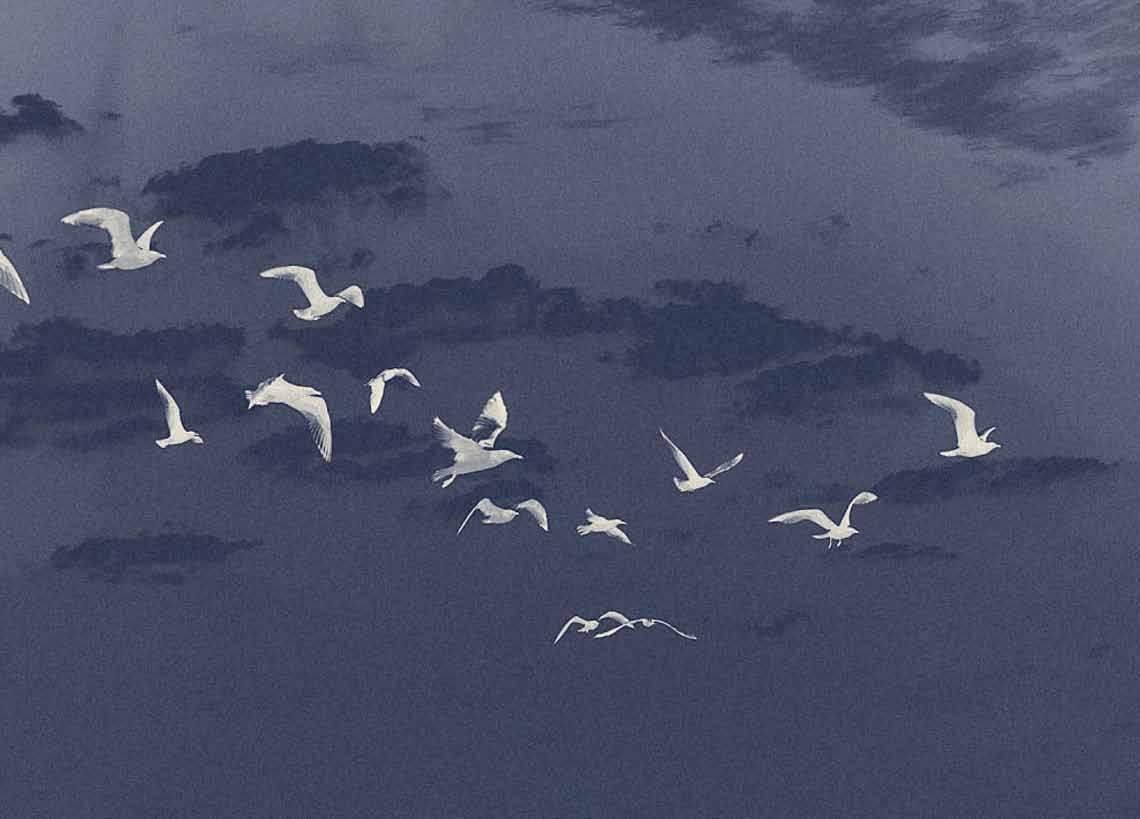
Although it still feels like beach weather across much of North America, billions of birds have started tak ing wing for one of nature’s great spectacles: fall mi gration. Birds fly south from the northern U.S. and Canada to wintering grounds in the southern U.S., Caribbean, and Latin America, sometimes covering thousands of miles. Other birds leave temperate Eura
sia for Africa, tropical Asia, or Australia.
Using observation records and data collected through bird banding, 20th century ornithologists roughly mapped general migration routes and timing for most migratory species. Later, using radar at airports and weather stations, they discovered how weather and other factors affect when birds migrate and how high they fly.
Credit:
Today, technological advances are providing new in sights into bird migration and showing that it is more complex and wonderful than scientists ever imag ined. These new and constantly improving technolo gies are key aids for protecting migratory birds in the face of habitat loss and other threats.
The power of the internet has greatly aided migratory bird research. Using the popular eBird network, bird ers all over the world can upload sightings to a central database, creating a real-time record of the ebb and flow of migration.
Ornithologists have also learned to use NEXRAD, a national network of Doppler weather radars, to visual ize birds migrating down the North American conti nent.
Now, scientists are setting up a global network of re ceiver stations called the Motus Network, which cur rently has 1,500 receivers in 31 countries. Each re ceiver constantly records the presence of any birds or other animals within a nine-mile radius that scientists have fitted with small, lightweight radio transmitters, and shares the data online. The network will become increasingly useful for understanding bird migration as more receiver stations become active along migra tion tracks.
Three new technologies are rapidly expanding what we know about bird migration. The first is satellite te lemetry of bird movement. Researchers fit birds with small solar-powered transmitters, which send data on the birds’ locations to a satellite and then on to a sci entist’s office computer. The scientist can learn where a bird is, the route it took to get there, and how fast it travels.
For example, the bar-tailed godwit, a pigeon-size shorebird, breeds in Alaska and then migrates to New Zealand. Satellite transmitters show that god wits often fly nonstop from Alaska to New Zealand. Recently, a godwit set the record for the longest nonstop flight by a land bird: 8,100 miles in 10 days,
from Alaska to Australia.
Satellite telemetry studies show how much individual birds, even those from the same breeding location, vary in their migratory behavior. Individual differ ences in migratory behavior are probably due to dif ferences in physical condition, learning, experience, and personal preferences.
Another shorebird, the whimbrel, also makes a phe nomenally long journey over the ocean. Satellite te lemetry has shown that some whimbrels travel from northwest Canada, across the North American conti nent to Canada’s east coast, then set off over the At lantic Ocean on a 3,400-mile, six-day, nonstop flight to the coast of Brazil. In total, they may travel 6,800 miles.
Sadly, hunters kill some of these birds when they land to rest on islands in the Lesser Antilles. The unfortu nate fate of two satellite-tracked whimbrels has cata lyzed a campaign to tighten regulations on shorebird hunting in the Caribbean.
Many birds are too small to carry a satellite transmit ter. Given the energetic effort required for migration, a device must weigh less than 5% of a bird’s body weight, and many migratory songbirds weigh under 0.7 ounces.
An ingenious solution for small birds is a geolocator tag, or geologger—a tiny device that simply records time, location, and presence or absence of sunlight. Scientists know the timing of sunrise and sunset on a given date, so they can calculate a bird’s location on that date to within about 125 miles.
Birds carrying geologgers must be recaptured to

Technological advances are providing new insights into bird migration and showing that it is more complex and wonderful than scientists ever imagined.
download the data. That means the bird must survive a migration round trip and return to the same place where it was first captured and tagged. Amazingly, many geologger-tagged small birds do.
Geologgers have shown that Blackpoll warblers— small songbirds that breed in the boreal forests of North America—fly long distances over the Atlantic in fall, heading to the Amazon basin. Birds breeding in eastern North America head out over the Atlantic in maritime Canada or the northeastern U.S. and make a 60-hour, nonstop, 1,500-mile flight to the Greater Antilles. There they rest and recuperate, then continue across the Caribbean to South America. Blackpolls breeding in Alaska fly across the North
American continent before leaving shore on the At lantic coast and flying to South America. In total, they journey 6,600 miles over 60 days.
Even more amazing, geologgers show that another small songbird, the northern wheatear, migrates from North America to subSaharan Africa. Wheatears that breed in Alaska fly 9,100 miles across Asia to East Africa, taking three months to do so. Those breed ing in eastern Canada journey 4,600 miles across the Atlantic to Europe and then on to West Africa—in cluding a 2,100-mile , four-day, nonstop, overwater flight.
Two hours after sunset in fall, I like to sit outside and listen to birds migrating overhead. Most birds migrate at night, and many give a species-specific “chit,” “zeep” or other call-note while in flight. The calls may serve to keep migrating flocks together, including dif ferent species heading to the same destination.
Ornithologists are using automated passive acoustic recording to study these nocturnal calls and identify the species or group of related species that make each sound. The technology is a microphone directed at
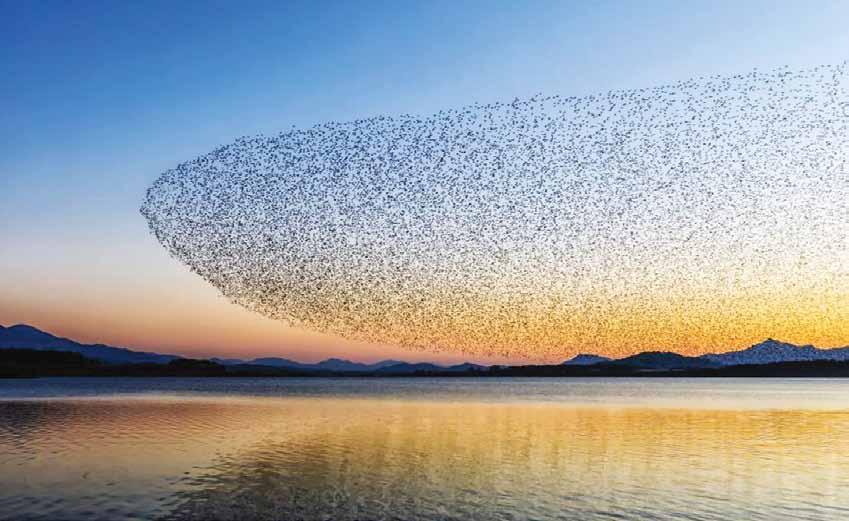 Credit: (Jong-Won Heo)
Credit: (Jong-Won Heo)
Using the popular eBird network, birders all over the world can upload sightings to a central database, creating a real-time record of the ebb and flow of migration.
Credit: (Allenboe/iStock)
the sky, connected to a computer that continuously records the sound stream, and is aided by sound rec ognition software. Sometimes it reveals migrants overhead that are rarely seen on the ground.
Nick Kachala, an honors student in my lab, set up recording units on three university properties in the fall of 2021. One of the most common migrants re corded was the gray-cheeked thrush, a shy bird of the northern boreal forest that is rarely seen in the northeast U.S. during fall migration. He also detected the dickcissel, a grassland bird that I have never seen in our area.
Many birdwatchers are now building do-it-yourself backyard recording units to identify the birds flying over their homes during migration.
Radar monitoring indicates that the number of North American migratory birds declined by 14% between 2007 and 2017. There probably are multiple causes, but habitat loss is likely the principal culprit.
Satellite telemetry and geologgers show that there are special stopover sites along migration routes where migrants rest and refuel, such as the Texas Gulf
Coast, the Florida Panhandle, and Mexico’s Yucatan Peninsula. Conservation experts widely agree that to protect migratory birds, it is critical to conserve these sites.
Effective conservation measures require knowing where and how birds migrate, and what dangers they face during migration. Ornithologists, using these new technologies, are learning things that will help to stop and reverse the global decline in migratory birds.
This article was originally published by Fast Company.
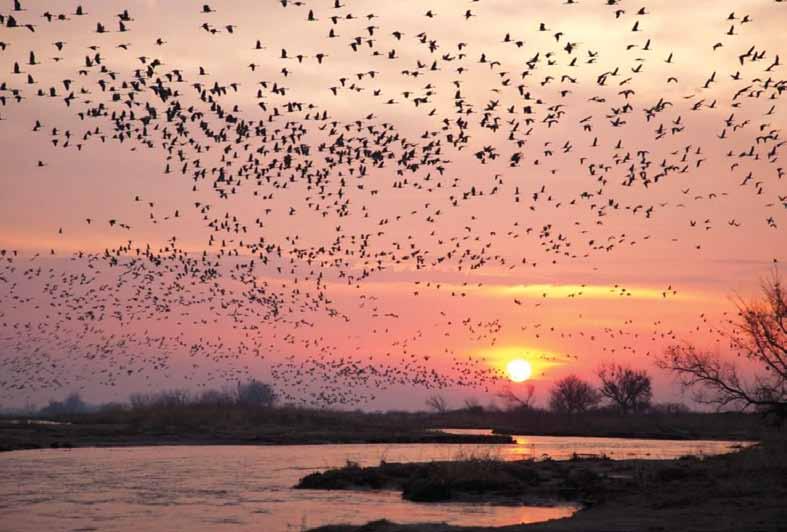
Now, scientists are setting up a global network of receiver stations called the Motus Network, which currently has 1,500 receivers in 31 countries.
Life takes a toll on the lower back. All the stand ing, bending, lifting, and twisting are sometimes too much for the spine -- something you find out when lower back pain strikes. Soothing the pain can require a combination of treatments. Muscle stretching is an

important approach to add to the list.
Your spine is a stack of interlocking bones (vertebrae) with cushions (discs) in between, and joints (facet joints) connecting each vertebra to the next. The facet
joints allow your spine to bend and twist.
This great architecture relies on muscles to sup port it and to help you move. The muscles that do most of the work are the erector spinae muscles along the spine, the iliopsoas muscles connecting the spine to the lower limbs, and the abdominal muscles in the front of the body that help prop up the torso.
Other muscles that support the back include the hip flexors in the front of the hips, the hamstrings in the back of the thighs, and the gluteus muscles in the buttocks.
If muscles get tight -- perhaps from too much sit ting -- they get shorter. They’re less flexible and don’t work well together. This can trigger a cas cade of effects that cause low back pain.
“Tight back muscles inhibit the facet joints from moving the way they’re supposed to, which can be painful. Tight muscles can also pull on other structures in the body. For example, if the ham strings are tight, they pull the pelvis down. The pelvis connects to the low back. And if the pel vis is being pulled, the low back is being pulled, which can hurt,” says Christina Ruggeri, a physi cal therapist in the sports medicine division of Harvard-affiliated Spaulding Rehabilitation Hos pital.
Another example: Tight muscles in the buttocks can pinch the nearby sciatic nerve, triggering pain in the low back and all the way down the leg.
To promote harmony among muscles, bones, and joints, you need to stretch the muscles. If you have recurring (chronic) low back pain, you can do this when the pain strikes.
Ruggeri says one helpful stretch involves lying on your back and pulling your legs close to your chest for half a minute. You can do this on a bed or on the floor. We’ve provided other stretches.
These stretches work several muscle groups at the same time, such as muscles in the low back, but tocks, and front of the hips.
“Just be gentle when you stretch, so you help your muscles and don’t injure them or aggravate the cause of the pain, such as a compressed nerve,” Ruggeri says.
If you experience back pain that’s sudden and new, it could be from an injury, such as a muscle strain. In that case, go easy on your back for a few days. If the pain doesn’t go away, call your doctor to report your symptoms.
Some symptoms that accompany new, intense low back pain should prompt an immediate call to your doctor: fever, sudden or worsening leg weakness, problems controlling urination or bow el movements, or numbness in your groin or anal area. These symptoms can indicate infection or another serious back problem.
Stretching to quell chronic low back pain is most effective when you do it regularly, since it helps prevent recurrences. You can stretch a few times a week or every day.
For a full-body stretch, warm up the muscles in advance by marching in place for a few min utes while moving your arms around. This gets blood flowing to the muscles so they’re plia ble. Then, stretch all the major muscle groups, including your shoulders, back, abdomen, but

To promote harmony among muscles, bones, and joints, you need to stretch the muscles. If you have recurring (chronic) low back pain, you can do this when the pain strikes.
tocks, and legs.
Just make sure you start a stretching regimen slowly. “Don’t hold a stretch longer than 30 sec onds, and don’t bounce,” Ruggeri says. “Every few days, increase the length of the stretch until you can hold it for a minute.”
Stop stretching if your pain gets worse during a stretch. And don’t start stretching on your own if you have a diagnosed back problem such as se vere spinal stenosis (narrowing of the spinal ca nal), leaking or worn-out discs, or severe lower back arthritis. In that case, a physical therapist will need to assess your ability and tailor a stretching program for your needs.
In addition to stretching your muscles, you’ll need to strengthen them regularly to keep them healthy, and do aerobic exercise -- the kind that gets your heart and lungs working, like brisk walking -- for about 150 minutes a week.
Lie on your back on a bed or the floor. Bend
your right knee. Grasp the back of your thigh and pull your knee in toward your chest. Flex your left foot and press the thigh and calf of that leg down toward the floor to feel a stretch in the front of your left hip and top of your left thigh. Hold 10 to 30 seconds, return to the starting po sition, and repeat with the other leg. Repeat the process three times.
Lie on your back on a bed or the floor, with your knees bent and feet together. Put your arms out to each side at shoulder level, palms up. Tighten your abdominal muscles, lift both knees toward your chest, then lower them together to the left side on the floor. Keep your shoulders relaxed and pressed into the floor. Look in the opposite direction, and feel the stretch across your chest, torso, lower back. and hip. Hold 10 to 30 sec onds. Bring both knees back to center, then re peat the stretch on your right side. Repeat the exercise three times.

Get on all fours, knees hip-width apart, with your big toes touching. Slowly drop your buttocks back toward your heels as you extend your hands in front of you and rest your forehead on the mat. Feel the stretch down your arms, shoulders, and back. Hold for 10 to 30 seconds. Return to the starting position and repeat the process three times.
This article was originally published by Harvard Health Letter.
Credit: (TNS)
“Just be gentle when you stretch, so you help your muscles and don’t injure them or aggravate the cause of the pain, such as a compressed nerve.”




When Mikhail Gorbachev passed away last August, he was buried quietly after a formal funeral which was not attended by Putin, not because of he was busy with the war in Ukraine, but due to the unpopularity of the last Soviet communist leader who left the Kremlin in a state of darkness after the Supreme Soviet’s approval of dissolving the USSR in December 1991, and the red flag was lowered forever while the tricolor flag was raised.
Gorbachev, whom the world saw as a hero and was awarded Nobel Prize in 1990, disappeared from the public eye. The Russian people viewed him as an evil and he would just get %0.5 of votes when he attempted a political return in 1996. He was an honorable person who was reduced to disgrace.
Unsurprisingly, most politicians and few historians explained the events in terms of a conspiracy theory. Rarely did intellectuals dismantle the factors of this theory and systematically scrutinize it, particularly since history abounds with incidents that are inexplicable even under conspiracy theory. In the ancient past, Cambyses’s army disappeared and Rome was burnt, more recently, the siege of Vienna was lifted by the Ottomans for no clear reason, and Cairo was set ablaze by unknown hands. Additionally, Kennedy was killed, Abdel-Hakim Amer committed suicide, and America’s World Trade Centers collapsed. No conspiracy theory provided a full and convincing explanation for any of these events. It is time now to reverse that way of thinking.
This is not manipulation of terms. But in fact, it has become common to elaborately postulate the theory first, and then the action which can be an invasion, killing, burning, or destruction. For example, some intelligence services may spread false news about the health of somebody, so it would be plausible to announce their death in the right moment. Some people highlight the successive deaths of three top Soviet leaders within less than three years, and the rise of the youngest leader, who was lowest in the leadership hierarchy of the USSR.Once assuming power, that young leader began to promote policies of perestroika (reconstruction) and glasnost (openness and transparency), which resulted in the return of the famous Russian opposition figure Sakharov from exile. It also caused a snowball effect that started with the fall of Berlin Wall and continued until the victory of the West. It was the end of a historic era and the beginning of the American unipolar age.
Many intellectuals tend to explain the USSR dissolution in terms of conspiracy theory, given the dramatic factors in the story of the young leader who rose to the Secretariat of the Communist Party (CPSU), while most soviet leaders after Nikita Khrushchev looked like mummies in a history museum. No one can forget the images of Soviet leaders in 1980s during military parades commemorating the Bolshevik Revolution. In a mummified posture, they raised their hands to salute the soldiers.
These photos reflected a stagnant and
dysfunctional Soviet administration which was detected by the West that started to cultivate the theory of the fall of the Soviet Union. It was a fierce campaign that was only previously seen during the building of Berlin wall and the escape of refugees from Eastern to Western Germany. The Western assault intensified across media platforms and Hollywood movies that were smuggled to Russia along with salacious goods, such as sexy clothes, and dreams of prosperity. All that coincided with a thickening of Kremlin’s arteries, the death of longtime CPSU Secretary Leonid Brezhnev, then his successor Yuri Andropov who died less than two years later to be succeeded by Konstantin Chernenko who also died less than a year later. During this confusion, Gorbachev ascended to the Politburo.
In a visit with his wife Raisa to London, he drew the attention of Margret Thatcher, as she focused on him specifically among the Russian delegation. His wife received a special welcome through intensive PR efforts. She was taken on tours purposefully designed to awe her with the Western lifestyle. One of these tours was to the famous Harrods store which was opened exclusively for her after working hours, and it was reported that the store’s owners accompanied her during the visit. British intelligence kept monitoring Raisa to know her weaknesses, and she didn’t hide her love of jewelry, fur and haute couture. Meanwhile, Thatcher described Gorbachev as a man with whom she could do business. Less than three years after this meeting, Gorbachev was elected as the General Secretary of the CPSU. The only way that Konstantin Chernenko, the last Soviet leader who witnessed the Bolshevik revolution in 1917,
would disappear was to die, so Gorbachev could succeed him. No one was able to explain why the new leader deviated from the communist line. Was it the political prudence that he practiced all his life until he came to power? Was it his wife’s passion for provocative Western goods? Or was it the successful deliberate marketing of capitalism as an effective remedy for poverty, ignorance and illness? Russia at that time was not poor, but suffered from an aging administration. Hence came the policies of perestroika and glasnost, which were not only approved in the Soviet Union, but also the Eastern Bloc. The Western propaganda machine employed these policies to sell delusions to peoples of countries aligned with Russia. Lithuania, Estonia and Latvia announced their independence in 1988 without any action by the Red Army to prevent them, although the same army invaded Hungary in 1956 and Prague in 1968 for reasons less than independence. It was the beginning of rebellion against communist values.
Times had changed in that new era and the Soviet Union had lost half of its power due to Western propaganda, and lost the other half because of the rigid minds of its leaders. The result was the breakup of the Union that was once sheltered behind the Iron Curtain, which had blocked the wind of natural transformation, or “determinism” in Marxist terms. Thus, Russia was socially, economically and politically retarded, but had an advanced military with a nuclear strike force, by the time the dissolution reached its peak and thrust the country into an unhappy chapter. Here the theory of conspiracy began.



























